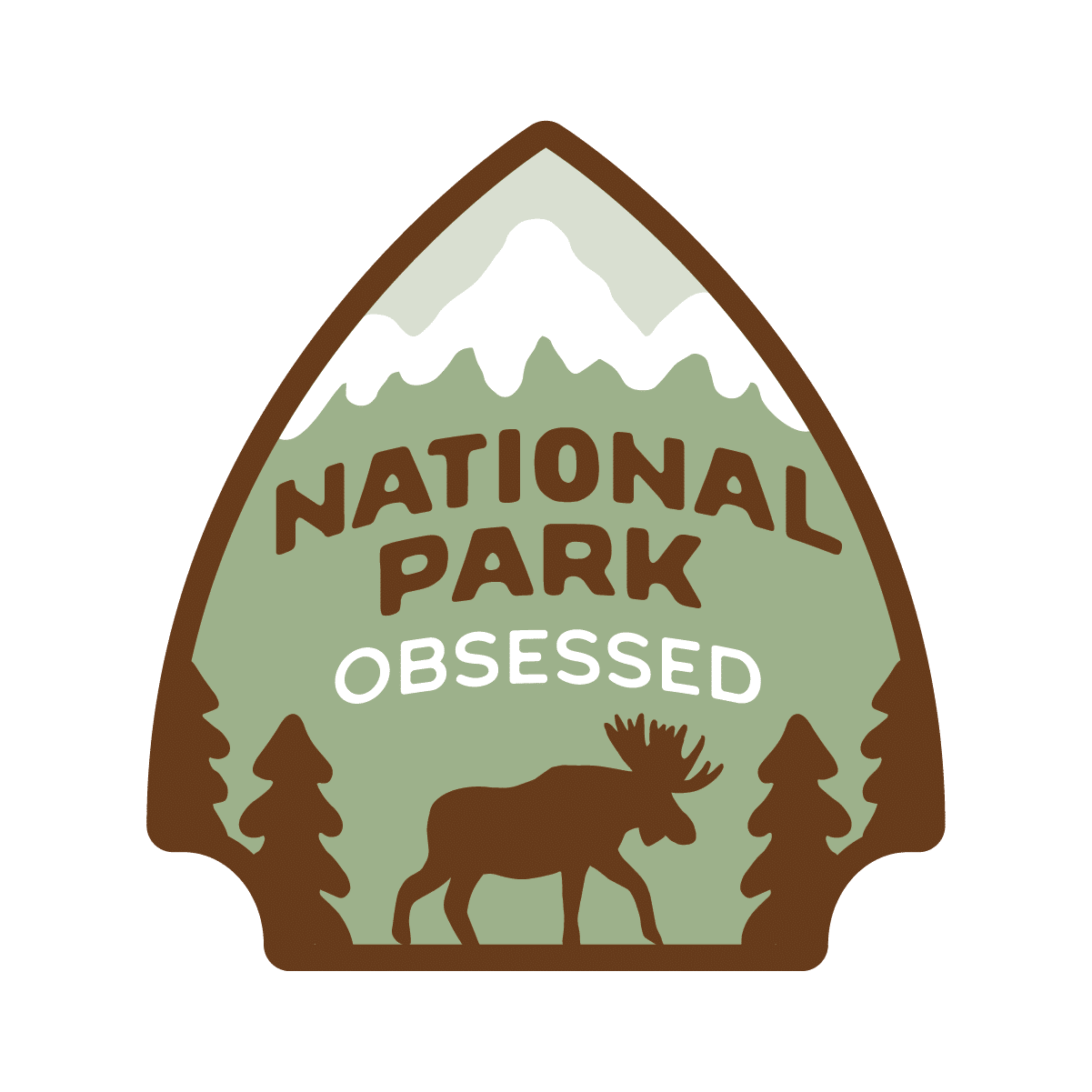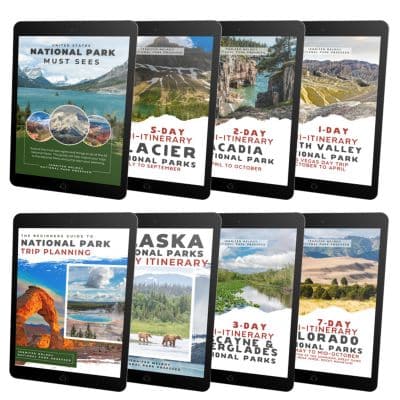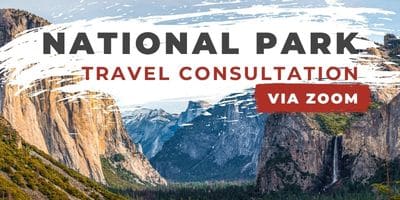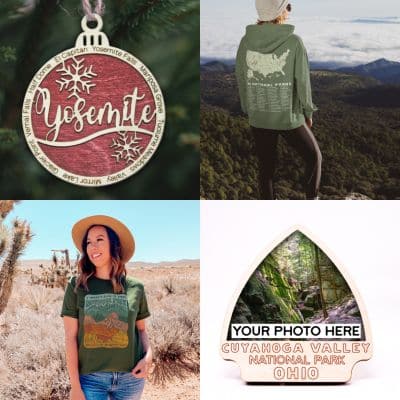
West Coast National Parks: The Definitive List for 2022
- Jennifer Melroy
- Last Modified January 17, 2022
- First Published on November 20, 2021
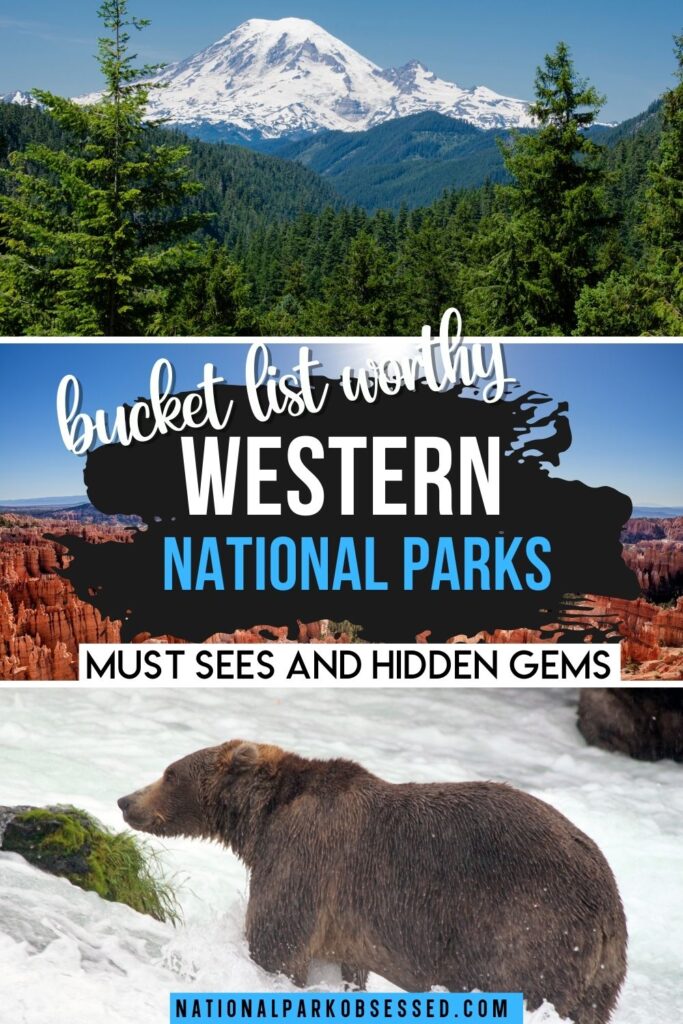
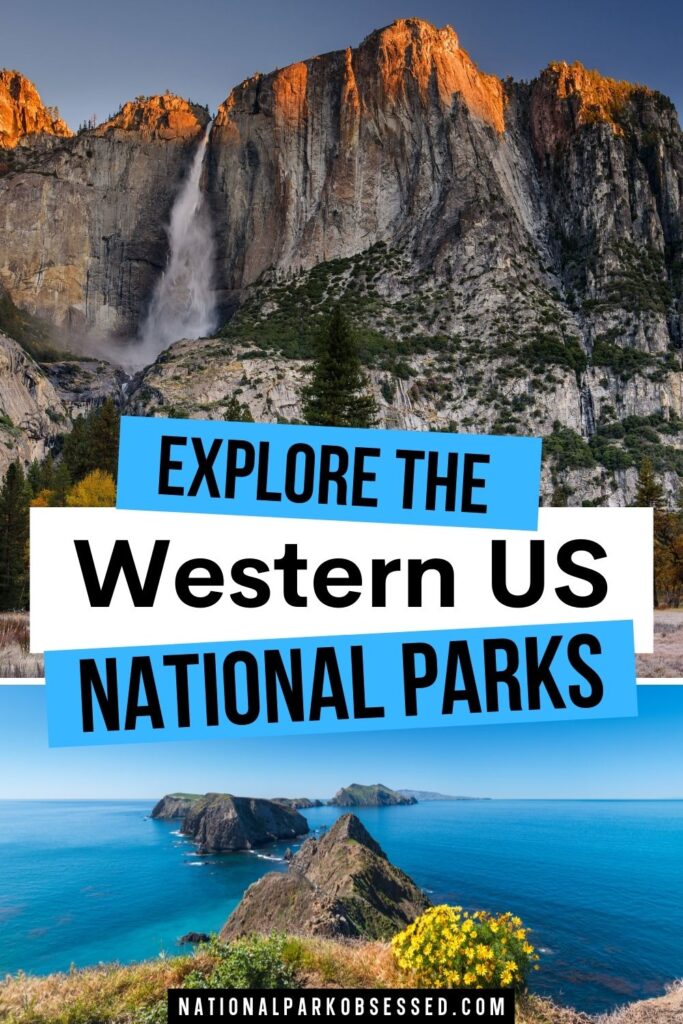
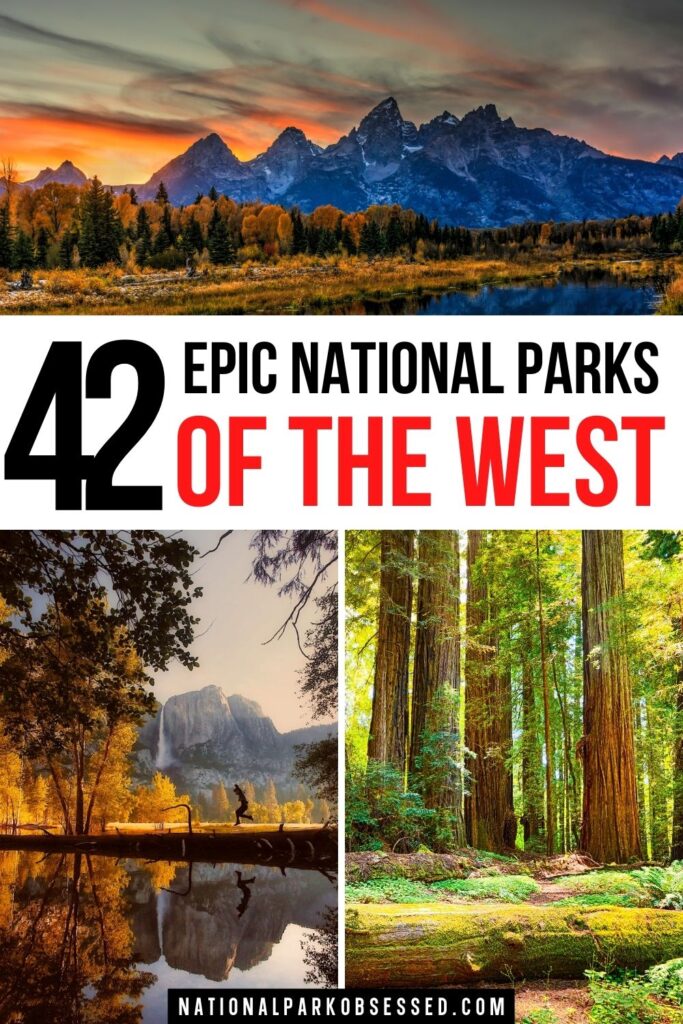
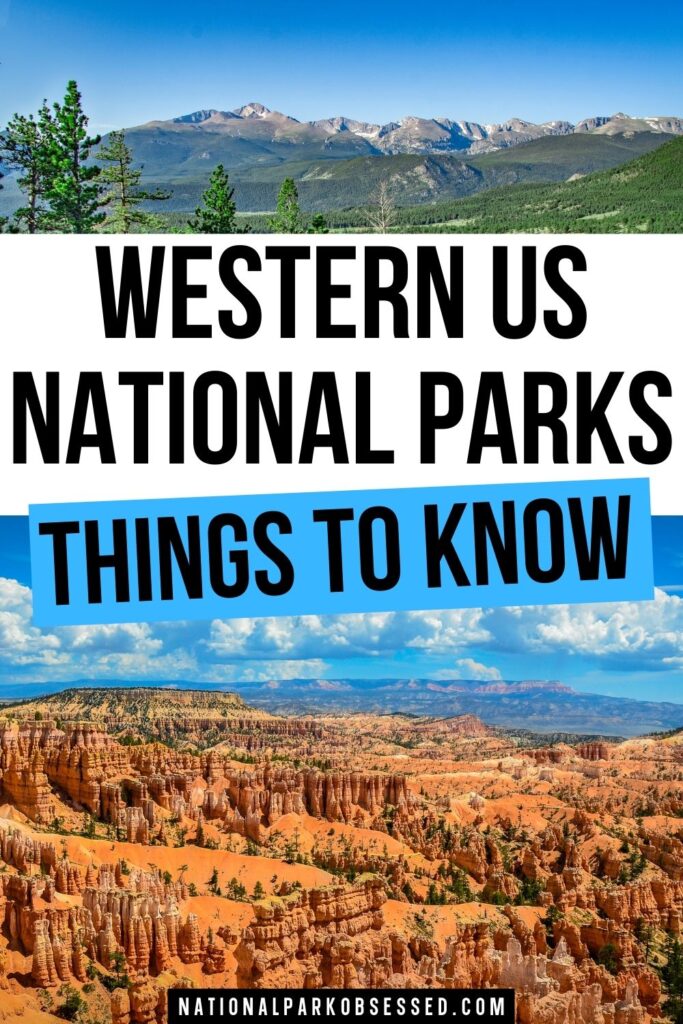
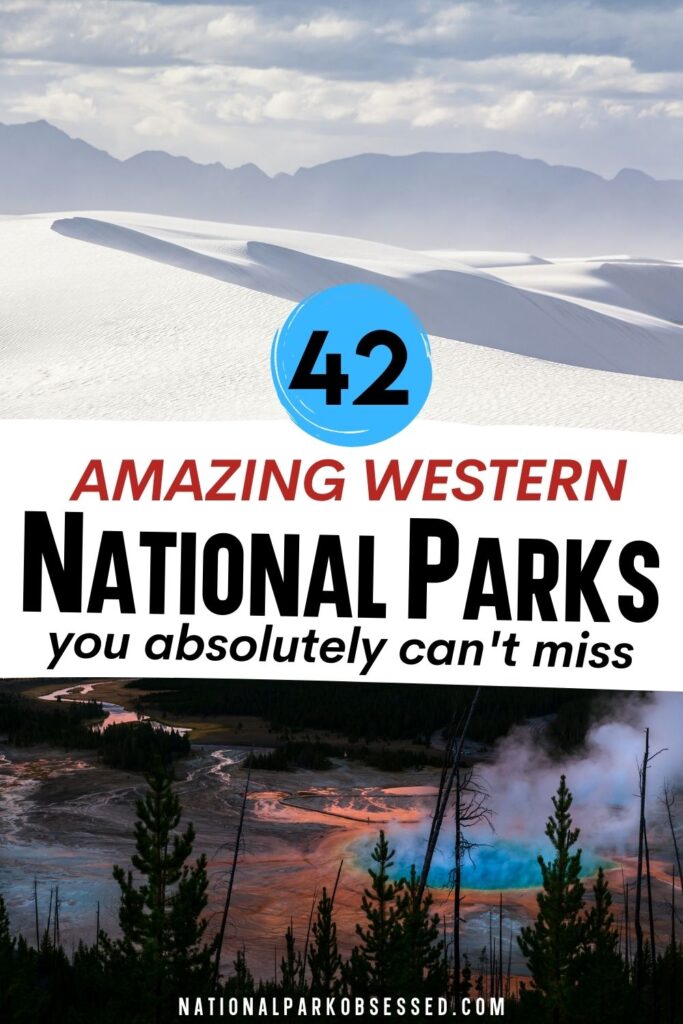

Post Summary: West Coast National Parks
Magnificent waterfalls. Towering mountain ranges. Spectacular alpine lakes. The world’s largest concentration of geysers. The Western United States is home to some of the most diverse and epic landscapes in the world. The region is made up of 13 states and 3 territories. The National Parks of the West protect some of the most amazing natural features. There are 63 National Parks in the United States, 42 of them are located in the West.
These parks are some of America’s best and showcase a fraction of the national park system sites in the west. There are another 112 national parks to explore in the west. These include national monuments, historical sites, memorials, and much much more. This gives the Western United States a total of 155 national parks to explore.
The article is a guide to the Western National Parks including parks in the states of Alaska, Arizona, California, Colorado, Hawaii, Idaho, Montana, New Mexico, Nevada, Oregon, Utah Washington, and Wyoming along with the territories of American Samoa, Guam, and the Northern Mariana Islands. We will cover:
- Tips on Visiting the National Parks in Western US
- Western National Park Maps
- National Parks of the Western United States by State
- List of National Parks West by Unit
This post may contain affiliate links, meaning if you book or buy something through one of these links, I may earn a small commission at no extra cost to you! Read the full disclosure policy here
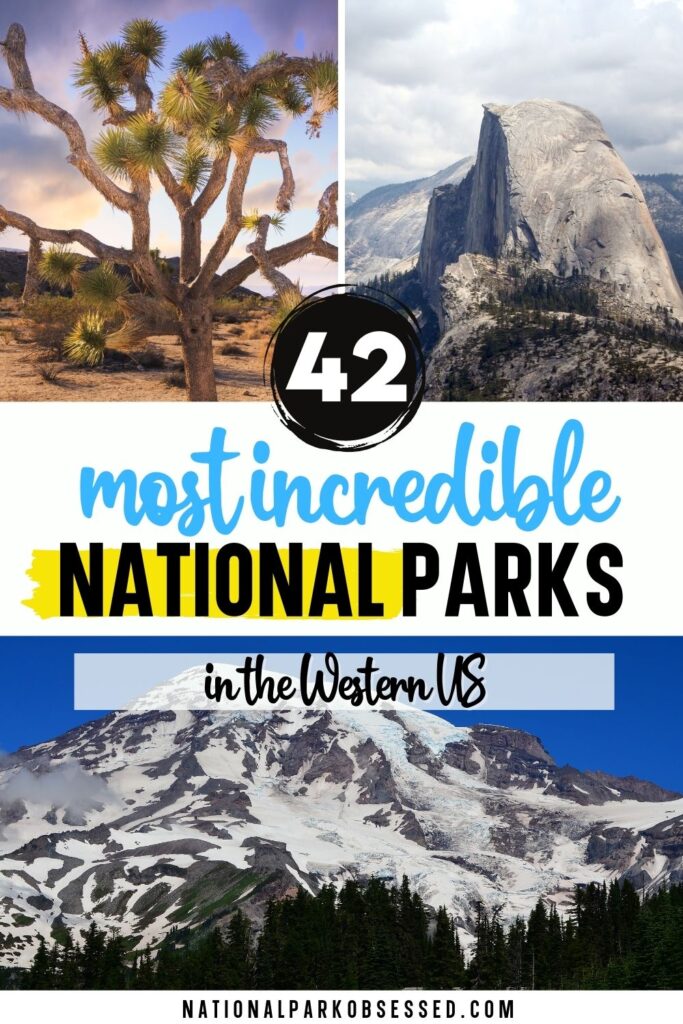
How many National Parks are in the West Coast?
There a 42 West Coast National Parks. They are split between Alaska, American Samoa, Arizona, California, Colorado, Guam, Hawaii, Idaho, Montana, Nevada, New Mexico, Northern Mariana Islands, Oregon, Washington, and Wyoming.
If we want to talk about all the National Park Service units in the West Coast, there are 155 national parks in the West. They are divided as follows
- 42 National Parks
- 48 National Monuments
- 14 National Preserves
- 16 National Historical Parks
- 16 National Historic Sites
- 1 National Battlefield
- 3 National Memorial
- 10 National Recreation Areas
- 1 National Seashore
- 1 National River
- 1 National Parkway
- 2 National Reserve
Tips on Visiting National Parks Out West
Best Time to Visit the National Parks in the West United States
The western national parks cover a lot of landscapes. They range from desert parks to tropical islands to Arctic tundra. These parks can range from the hottest place in the US to some of the coldest. The best time to visit these national parks depends on the park and what you would like to do in said national park.
Most national parks are busiest during the summer season due to the fact that the kids are off from school and the weather is warmer. Personally, I prefer to visit the parks during the spring or fall when possible.
Summer Parks Suggestions – Katmai, Yellowstone, Glacier, Mount Rainier, Olympic
Fall Parks – Rocky Mountain, Grand Teton, Denali, Joshua Tree
Winter Parks – Death Valley, Big Bend, Saguaro
Spring Parks – Yosemite, Pinnacles, Petrified Forest
National Parks vs National Parks Units
This section is going to get a little bit technical about the National Park System. So if you are not interested in learning a bit about why some sites are National Monuments and others are National Park, feel free to skip want to get straight into the National Parks of the Northeast.
The National Park Service is responsible for 423 units. These units have 19 different titles ranging from “National Historic Site” to ” National River. Per NPS, every unit under their purview is a national park.
Generally speaking, when someone talks about visiting a National Park they are talking about the 63 units that hold the designation “National Park.” The 63 National Parks are the creme of the crop parks (or they are supposed to be but that is a topic for a different day). These National Parks are typically the big outdoor-focused parks that are worth a 3-5 day visit.
People with a National Park Obsession are usually working on the list of 63 and visiting the other 360 national parks as they can A few hard-core people have the goal of visiting all 423. That is great for them but 423 is WAY more than 63. Personally, I’m almost done with the 63 and will probably keep working towards the 423 but I really hate visiting battlefields so it will take a lot longer to get motivated to visit them. I lived in Richmond, VA for two years. It took me 18 months to drag myself over to visit the Richmond National Battlefield Park.
If you want a more detailed explanation of the difference between a National Park and a national park unit click here.
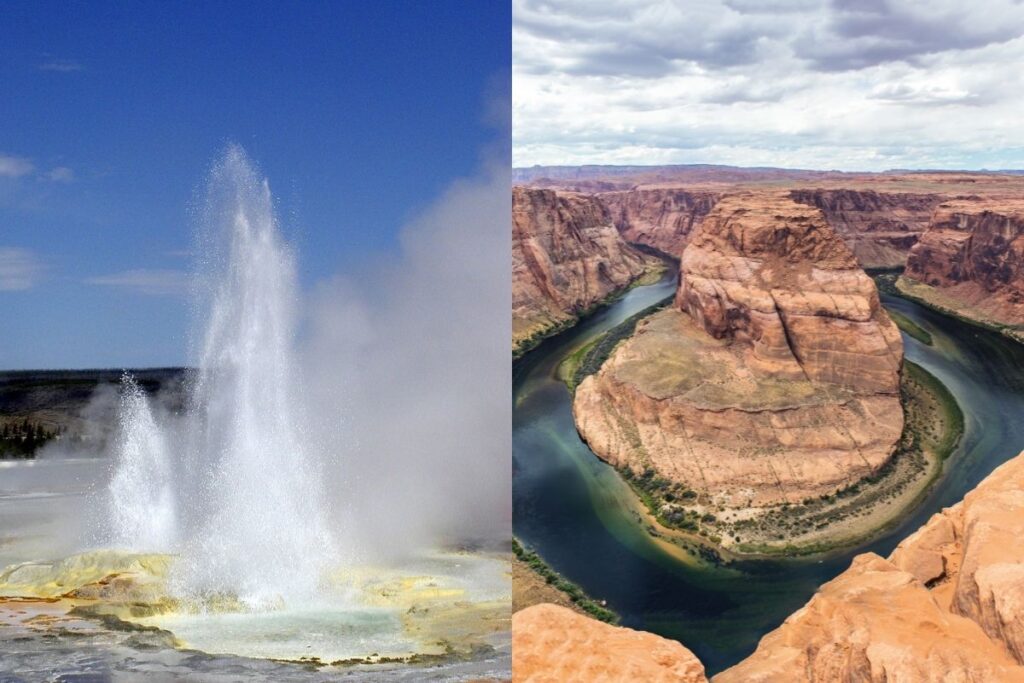
How much does it cost to visit a Western National Parks? – National Park Fees & Passes
Most of the National Parks in the West Coast region charge an entrance fee, but there are a handful that are free to enter. The fee is usually $35 per vehicle for a 7-day pass. For the remaining 112 NPS units in the west, the entrance fees vary greatly. Many are free to enter. Others charge an entrance fee. The fees range from $5 per person to $35 a vehicle.
If you are planning to explore more than two National Parks or 3-5 other designations in a year, you should plan on getting an America the Beautiful Pass. The pass is $80 and you get unlimited access to all entrance fee-charging in National Parks along with more than 3,000 other federal lands.
Both Grand Canyon and Zion charge a $35 entrance fee. That is $70 in entrance fees right there. Throw another park in and you have just saved $25 in entrance fees.
>>> You can get the America the Beautiful Pass from REI.
Fee Free Days in 2021
If you don’t plan (or can’t afford to) on purchasing an Ameria the Beautiful Annual Pass, there are six fee-free days each year. You can access the entrance fee-charging national parks for free on these days. Even if you have the Annual Pass, Fee Free Days can be a great time to visit the parks. Many parks offer special activities on these days.
- January 18: Birthday of Martin Luther King, Jr.
- April 17: First day of National Park Week
- August 4: One year anniversary of the Great American Outdoors Act
- August 25: National Park Service Birthday
- September 25: National Public Lands Day
- November 11: Veterans Day
Western National Park Map
States of the West Coast
National Parks of the West Coast by State
Alaska
Alaska has eight units holding the title of National Park. This is the second most of any state. Alaska’s National Parks are some of the most remote and most expensive parks to visit. Here is a guide for how much does it cost to visit Alaska’s National Parks.
Denali National Park and Preserve
Denali National Park and Preserve is Alaska’s oldest national park. It was established almost a half-century before Alaska became a state. This majestic park is the most popular of Alaska’s National Park. Denali is over 6 million acres and is the home of North America’s tallest mountain. The only way to access the park is the 92-mile long Denali Park Road.
Denali National Park is one of the best National Parks to see wildlife including moose, grizzly bears, wolves, caribou, and Dall sheep.
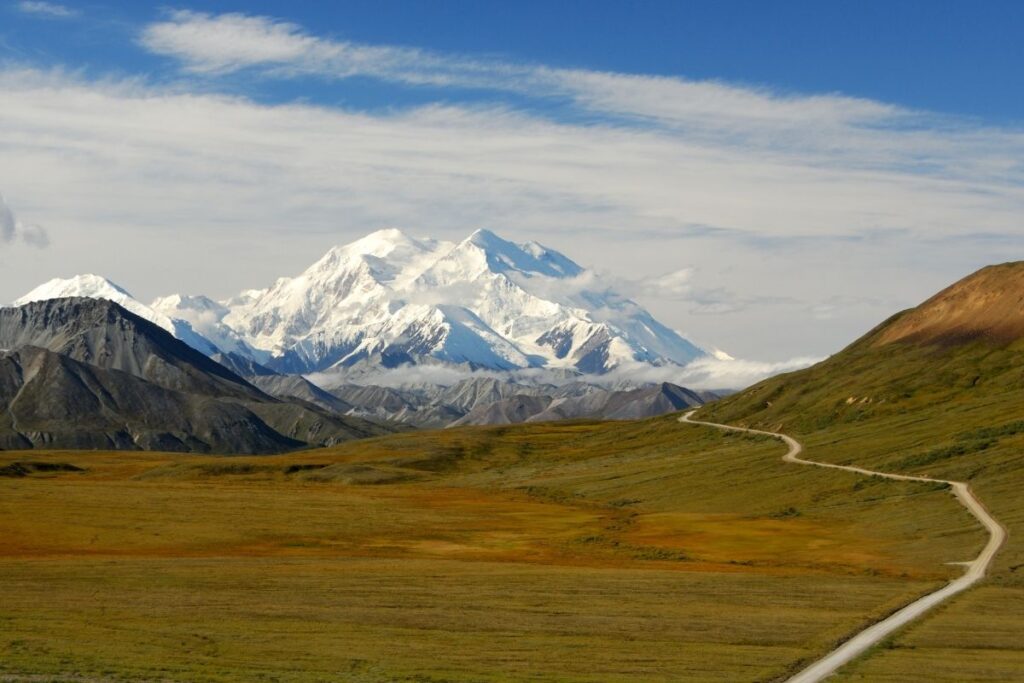
Gates of the Arctic National Park and Preserve
Gates of the Arctic National Park and Preserve is the northernmost national park. The park is located entirely north of the Arctic Circle and within the Brooks Range. There is currently no road access to the park**. The only way into the park is via air taxi or a bushwhack from the Dalton Highway.
Gates of the Arctic is a wild park. There are no roads or trails within the park. Visitors are welcome to hike anywhere they would like with limited restrictions.
*** There are currently plans to build a private road through a small section of the Preserve. This road will provide access to the Ambler mining district.
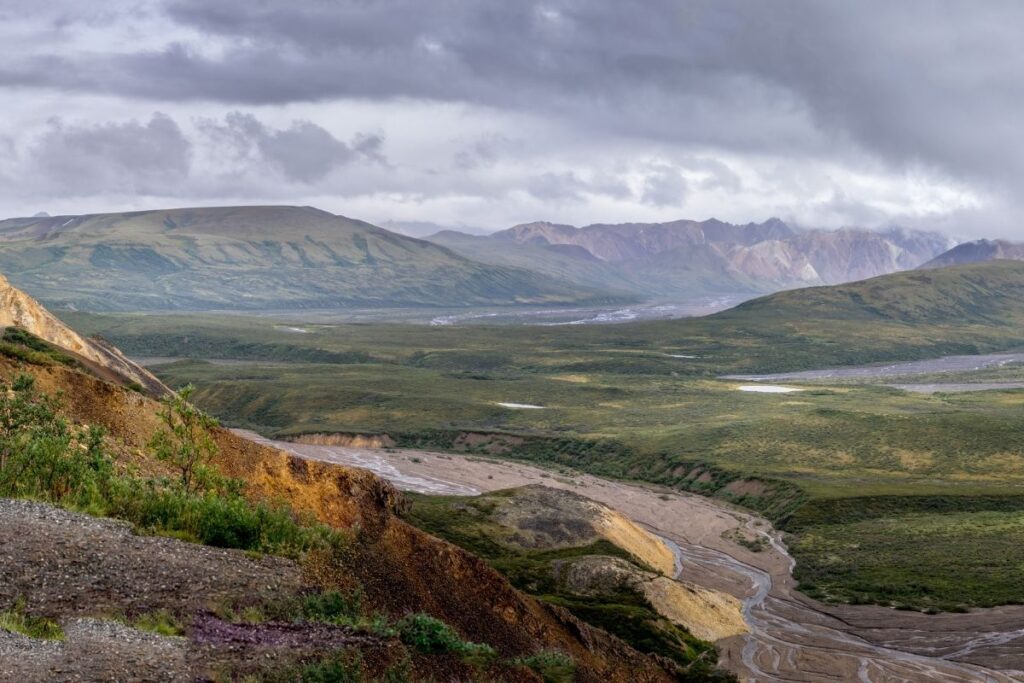
Glacier Bay National Park and Preserve
Glacier Bay National Park and Preserve is the second most popular national park in Alaska and is a popular stop on an Alaskan cruise ship route. Glacier Bay isn’t attached to the road system and you either need to fly or take a boat to visit.
Most visitors explore the park via water and take a boat tour back to the park’s tidewater glaciers.
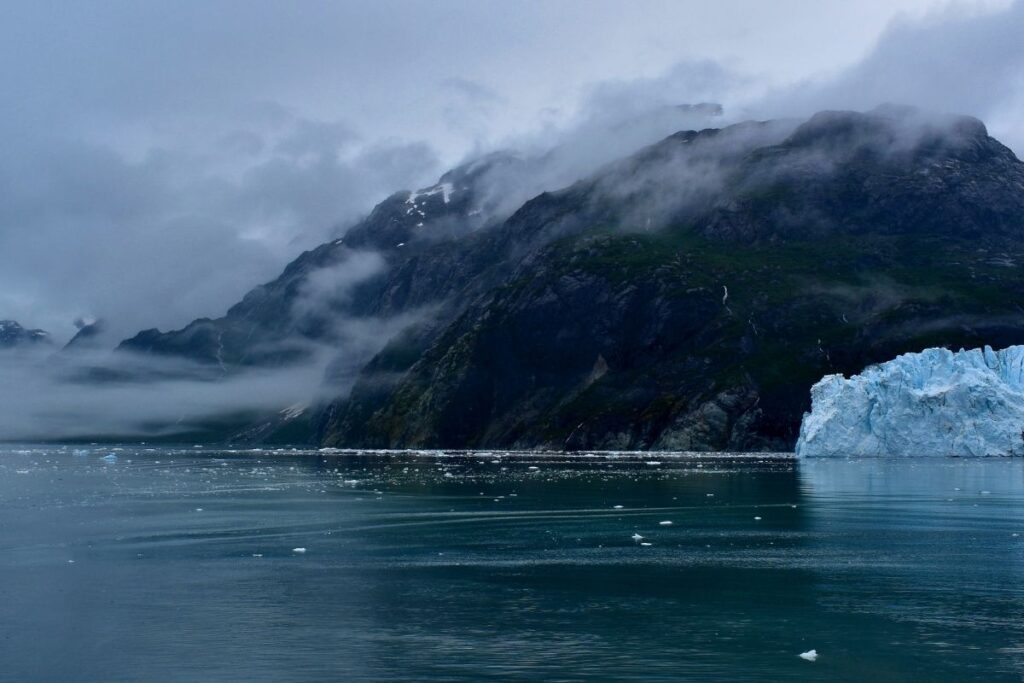
Katmai National Park and Preserve
Katmai National Park and Preserve is could be best described is the National Park of the bear. The park is home to one of the highest concentrations of bears in the world. There are an estimated 2,000 Alaskan Brown Bears in the park. The most well known bear viewing spot in the park is Brooks Camp area that include Brooks Falls and Brooks Lodge. While the bears make the park famous today, its the 1912 volcanic eruption of Novarupta that inspired the creation of Katmai National Park. This massive eruption was herd almost 500 miles away in Juneau.
Like many of Alaska’s National Park, Katmai is off the road system so the only way to reach the park is via boat or air.
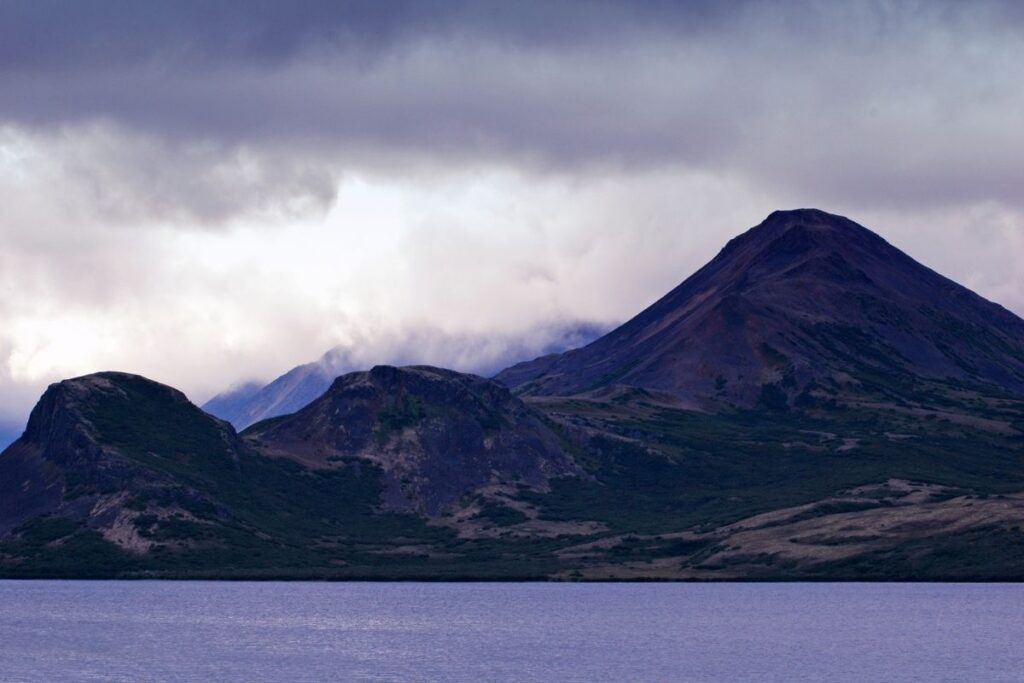
Kenai Fjords National Park
Kenai Fjords National Park protects the costal fjords, glaciers, and the Harding Icefield on the Kenai Peninsula. The Harding Icefield is on the the largest ice fields in the United States and the park has 38 named glaciers.
Kenai Fjords is one of the more accessible parks in Alaska. The park is a short 90-minute drive from Anchorage. From the road system you can access the Exit Glacier hiking trails and Harding Icefield. If you want to see the park’s famed fjords, you need to take a boat tour from Seward.
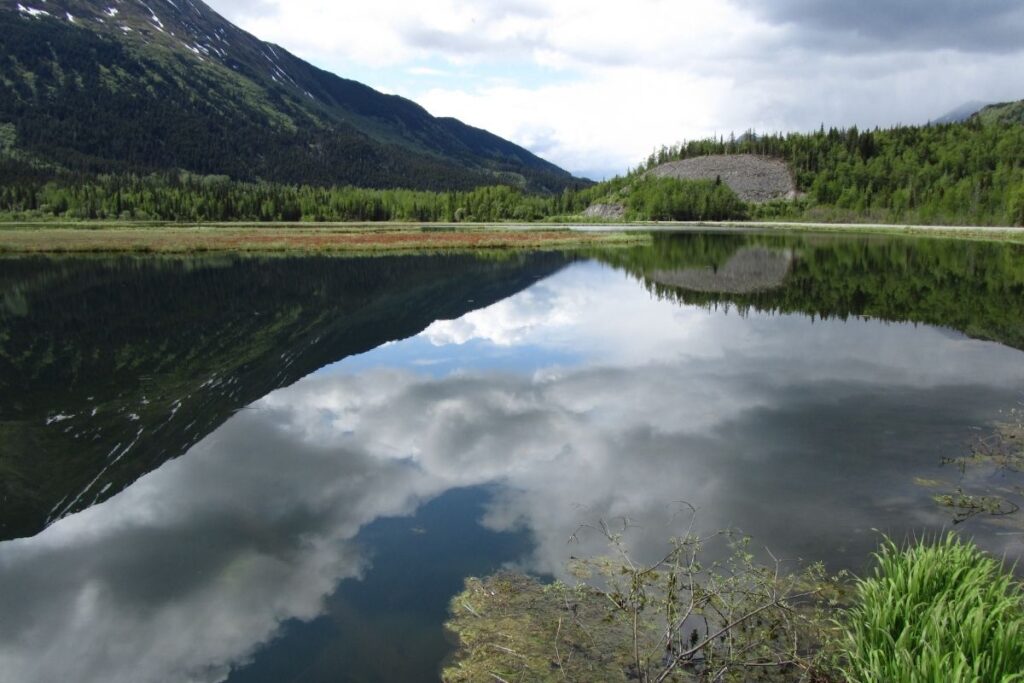
Kobuk Valley National Park
Kobuk Valley National Park is is home to some of the olderst archaeological sites in North America, an amazing caribou migration, and the largest active Arctic dune field in North America. Like it’s sister park, Gates of the Acrtic, the park is a wilderness park with no roads or trails.
Kobuk Valley can only be reached by air taxi. Flights can be arranged from Kotzebue, Bettles or Coldfoot.
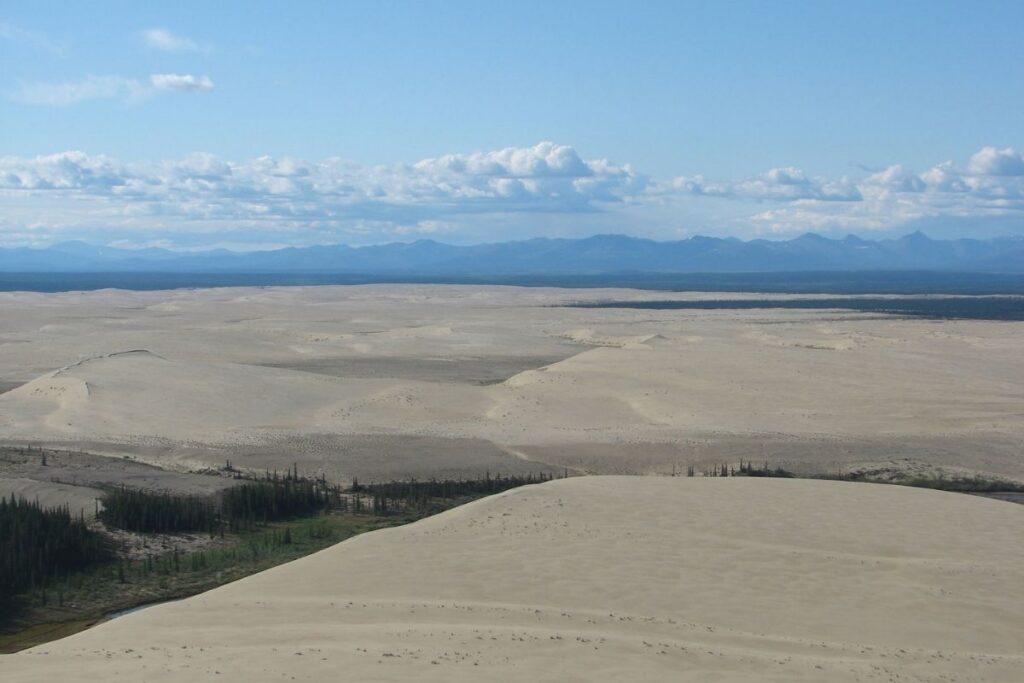
Lake Clark National Park and Preserve
Lake Clark National Park and Preserve is another Alaskan National Park that has amazing bear viewing along with an AMAZING collection of glacial lakes. One of the most unique and popular spots in the park is Richard Proenneke’s cabin. Proenneke moved to Alaska and filmed himself building his cabin and wrote a book about his experiences. He spend 30 years living that cabin. When the park was created, the park service gave Proenneke a volunteer shirt and let him continue to live in his cabin.
Lake Clark is another on the hard to access Alaskan parks. You can only reach Lake Clark by flying.
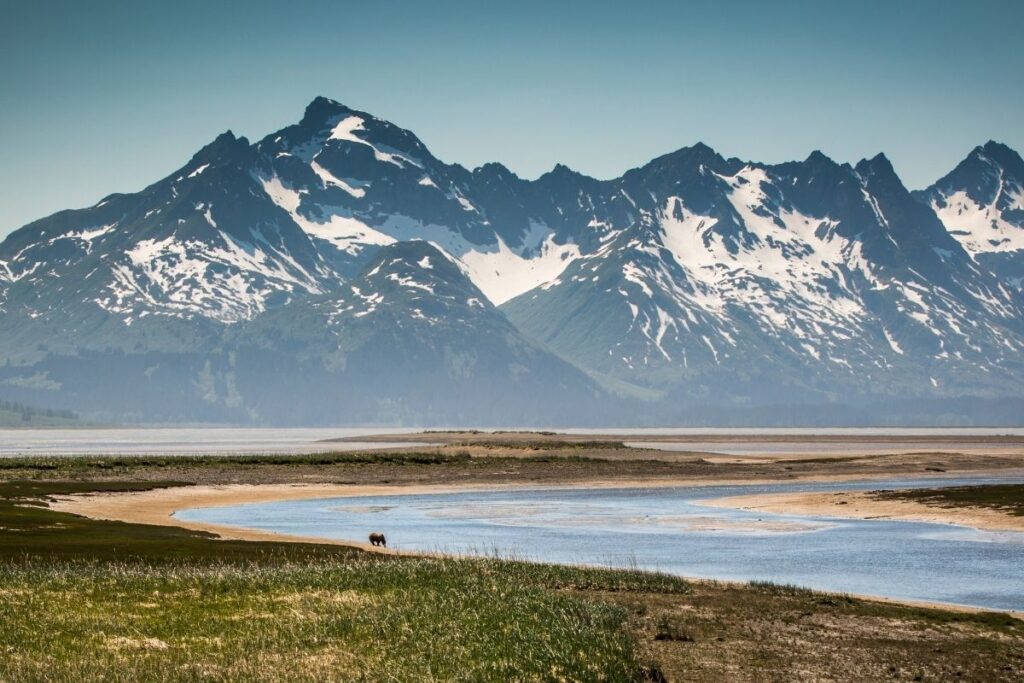
Wrangell-St. Elias National Park and Preserve
Wrangell – St. Elias National Park and Preserve is MASSIVE. At 13.2 million acres, its the largest National Park in the park system that is 6 Yellowstone if we are counting. The park is home to a large number of North American’s highest peaks. All of these peaks are within the Saint Elias Mountians. The park is home to glaciers, tideware, icefields and some of the highest despists of copper.
Wrangell – St. Elias can be reached by the road system and there are several small towns within the park.
Wrangell-St. Elias National Park and Preserve is an International Biosphere Reserve and are part of the Kluane/Wrangell–St. Elias/Glacier Bay/Tatshenshini-Alsek UNESCO World Heritage Site.
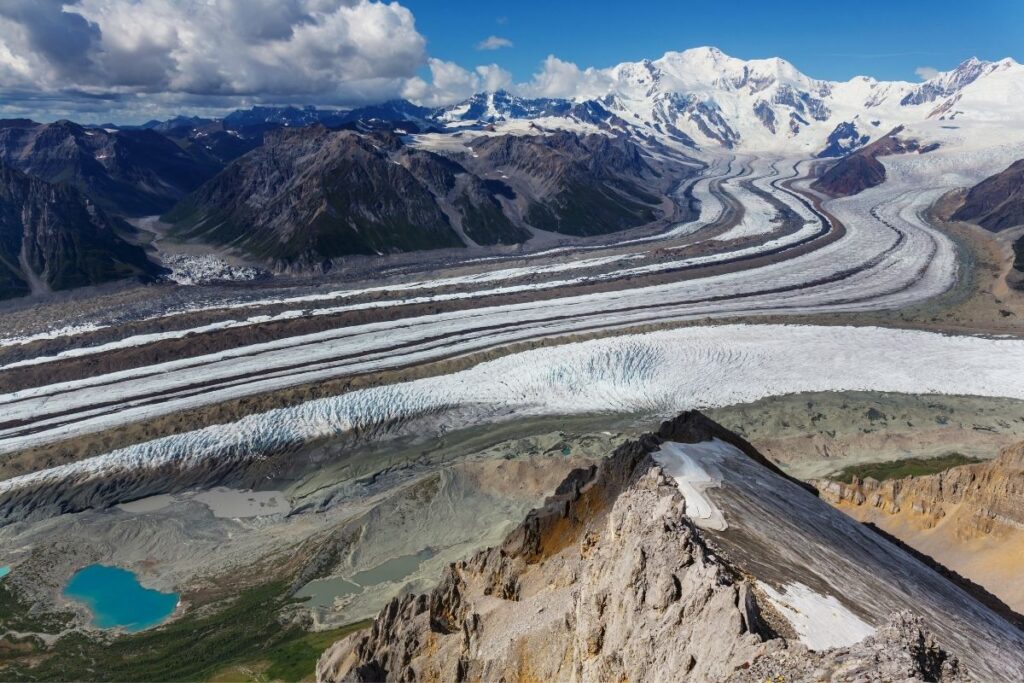
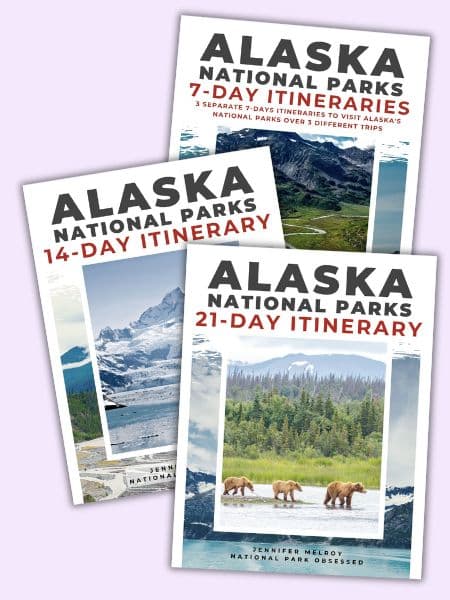
Does Alaska Trip Planning Leave You Feeling Overwhelmed?
Jump right into booking your Alaska National Parks trip with our expertly designed, pre-made, downloadable National Park itineraries.
Other National Parks Units in Alaksa
Here are the nine other National Park units in Alaska.
- Alagnak Wild River
- Aniakchak National Monument
- Aniakchak National Preserve
- Bering Land Bridge National Preserve
- Cape Krusenstern National Monument
- Klondike Gold Rush National Historical Park
- Noatak National Preserve
- Sitka National Historical Park
- Yukon-Charley Rivers National Preserve
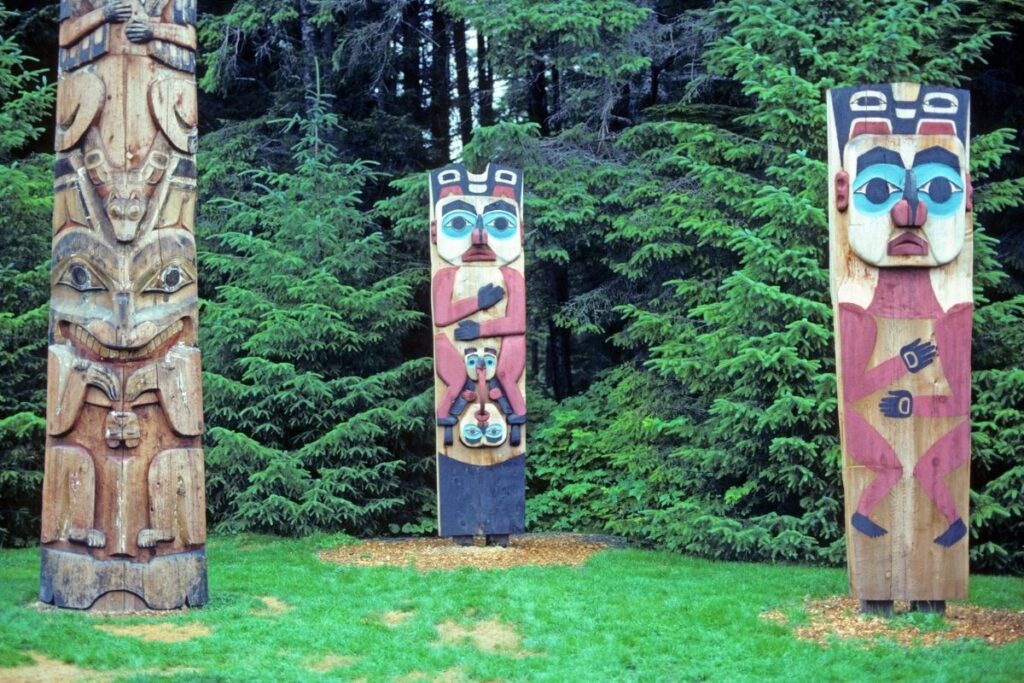
American Samoa
American Samoa has one unit holding the title of National Park.
National Park of American Samoa
National Park of American Samoa is the southern most national park in the United States and the only one south of the equator;. The tropical park protects the coral reefs and rainforest on the islands of Tutuila, Ofu, and Ta‘ū. The park is a great place for hiking and snorkeling.
Getting to American Samoa can be a bit of a challenge. Flights are limited and most visitors have to stop in Hawaii first.
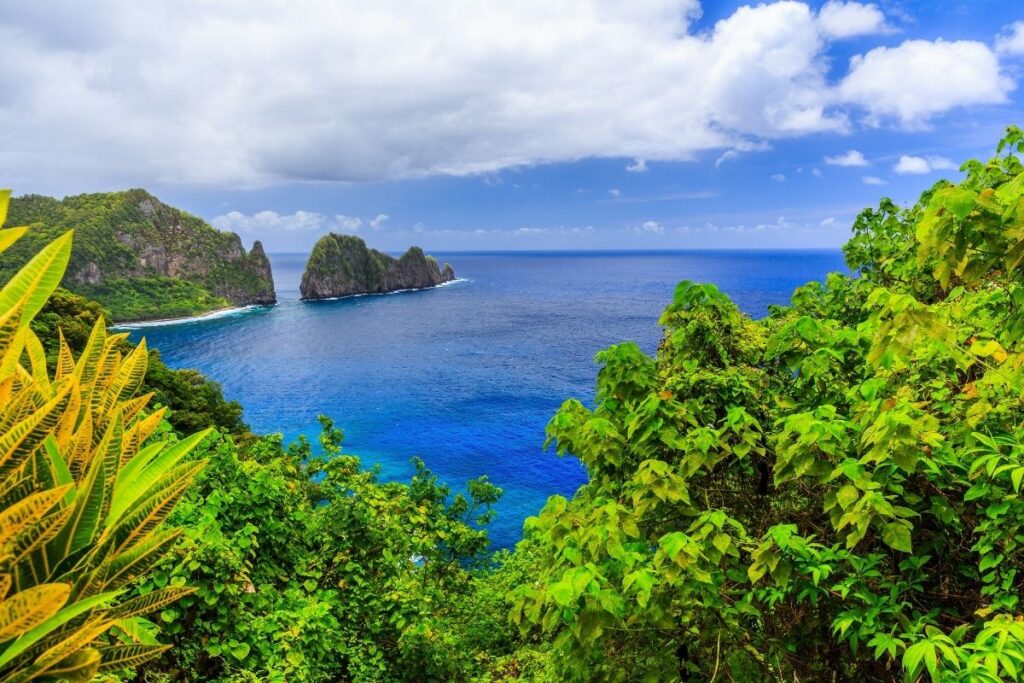
Arizona
Arizona has three units holding the title of National Park.
Grand Canyon National Park
Grand Canyon National Park is home to the Grand Canyon. The Grand Canyon is a 277-mile long canyon that is up to a mile deep and 18 miles wide. The canyon is the most visited national park on this list. The park is easily reached from Phoenix, Flagstaff, and Las Vegas. For a giant hole in the ground, it is pretty cool.
The Grand Canyon has been carved over millions of years and showcases billions of years of geological history. Standing on the rim, one can see the different rock layers. Each layer is a new period in history.
Grand Canyon National Park is a UNESCO World Heritage Site.
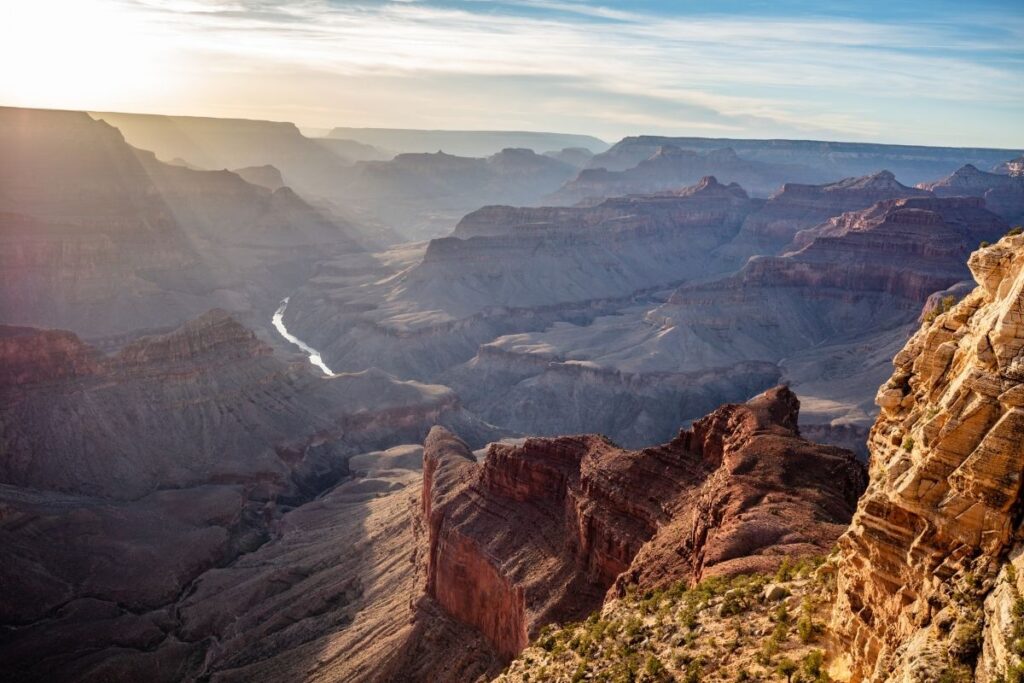
Petrified Forest National Park
Petrified Forest National Park is just that. A forest is full of trees that have turned to stone. The trees are from the Late Triassic Epoch period and is a colorful record of the forest that once stood in this region. In addition to the colorful fossils, the park has a series of colorful badlands called the Painted Desert.
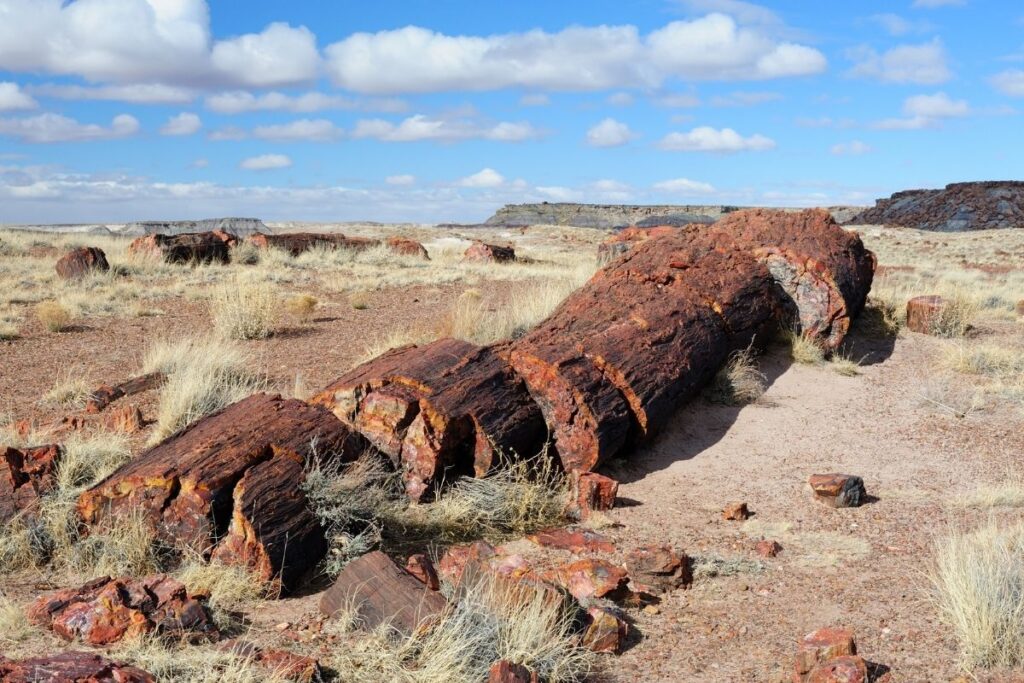
Saguaro National Park
Saguaro National Park is home to the Saguaro cacti. These tall cacti dominate the park’s landscape. The park is split into two districts around the city of Tucson. Each district is made up of one mountain range and slightly different landscapes. The Rincon Mountain District is dominated by the Rincon Mountains which are higher and wetter than the Tuscon Mountains of the Tuscon Mountain District.
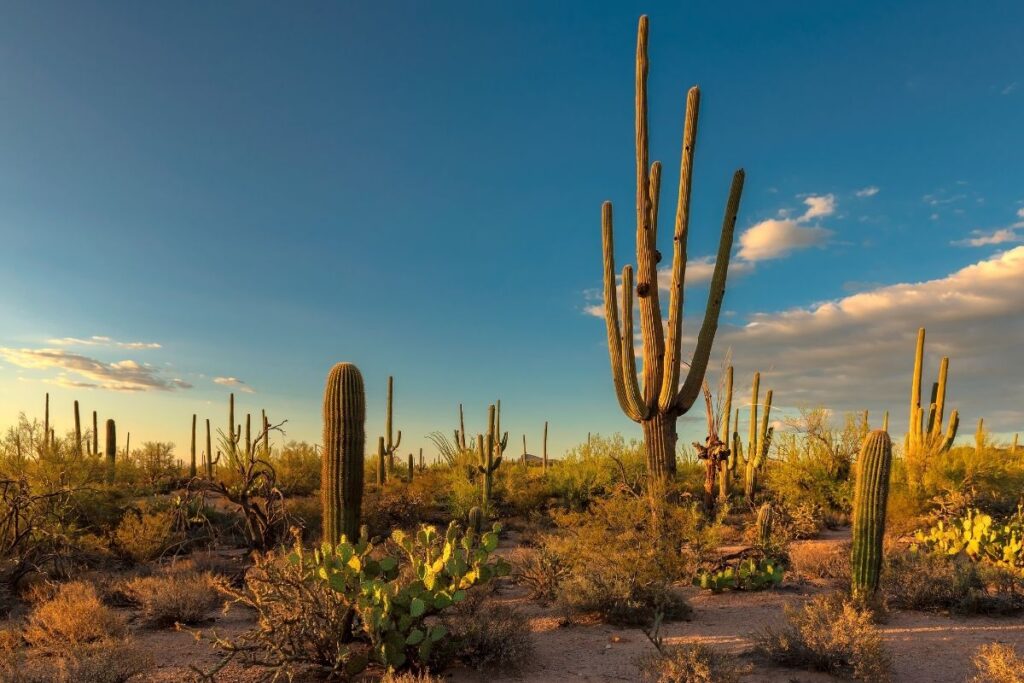
Other National Park Units in Arizona
Here are the nineteen other National Park units in Arizona.
- Canyon De Chelly National Monument
- Casa Grande Ruins National Monument
- Chiricahua National Monument
- Coronado National Memorial
- Fort Bowie National Historic Site
- Glen Canyon National Recreation Area (AZ, UT)
- Hohokam Pima National Monument
- Hubbell Trading Post National Historic Site
- Lake Mead National Recreation Area (AZ, NV)
- Montezuma Castle National Monument
- Navajo National Monument
- Organ Pipe Cactus National Monument
- Pipe Spring National Monument
- Sunset Crater Volcano National Monument
- Tonto National Monument
- Tumacacori National Historical Park
- Tuzigoot National Monument
- Walnut Canyon National Monument
- Wupatki National Monument
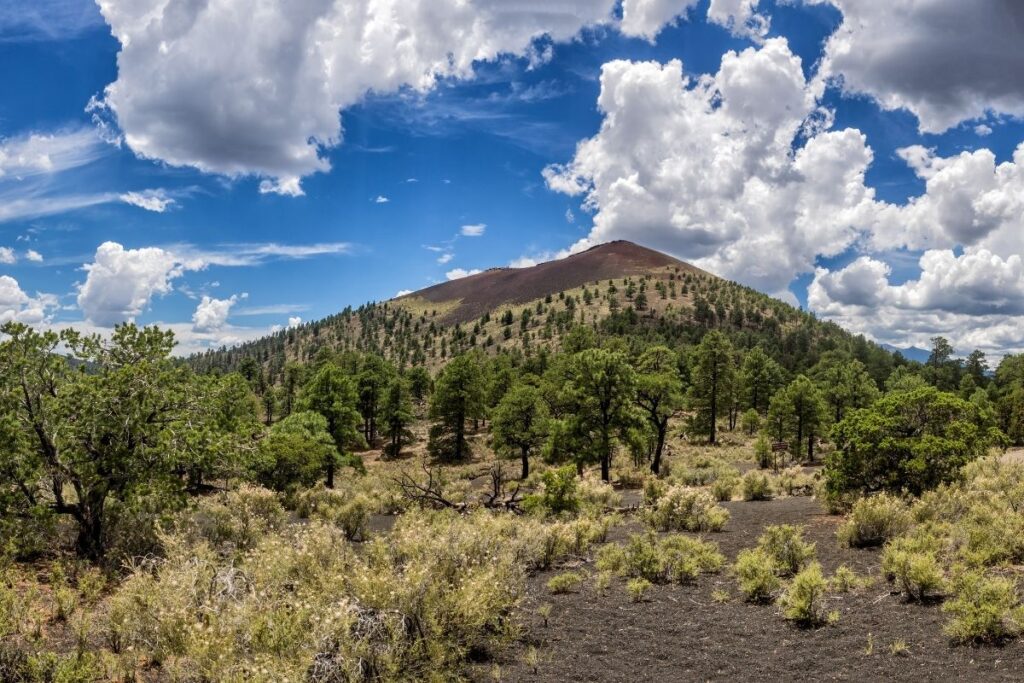
California
California has nine units holding the title of National Park. This is the most of any state.
Channel Islands National Park
Channel Islands National Park is known as the Galapagos of North America due to the unique ecosystems and wildlife found in the park. The park protects five of the eight Channel Islands off the coast of Californian near Ventura and Santa Barbara. The park is home to several endemic species such as the Island Fox and the Island Scrub Jays. The park is also home to important bird rookeries.
The Channel Islands are only accessible by boat and select islands can be reached by charter flight. There are regular ferries to the island from Island Packer.
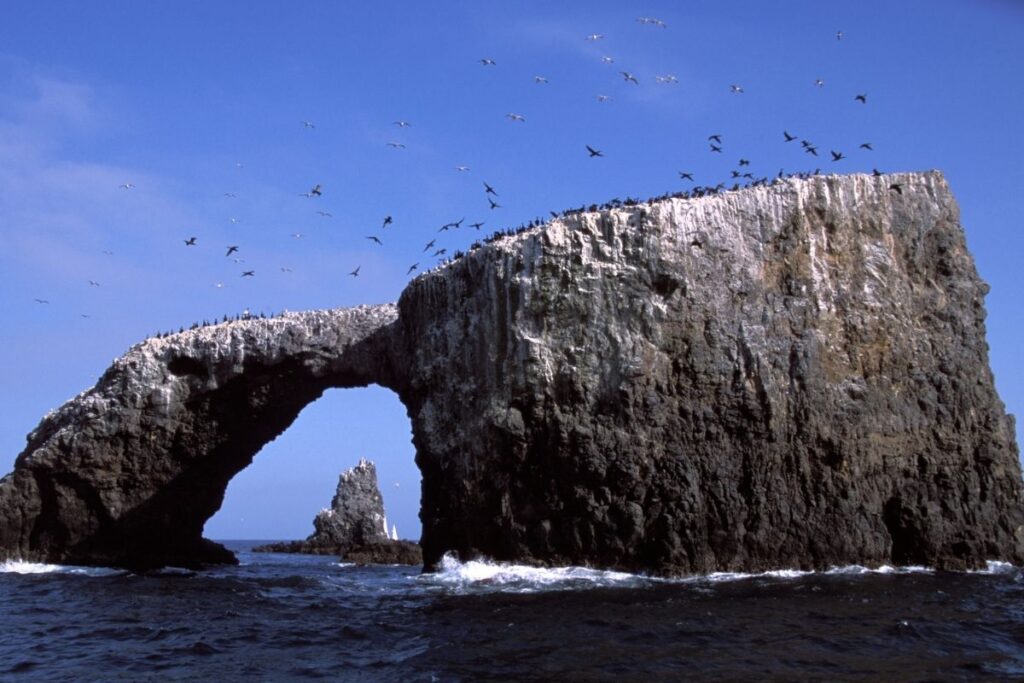
Death Valley National Park
Death Valley National Park is the park of extremes. It is the driest, the lowest, and the hottest place in North America. It also holds the record for being the hottest place on Earth. The park is mostly desert with a few oases. The park is located between the Great Basin and Mojave Deserts and this transition gives the park a unique otherworldly landscape.
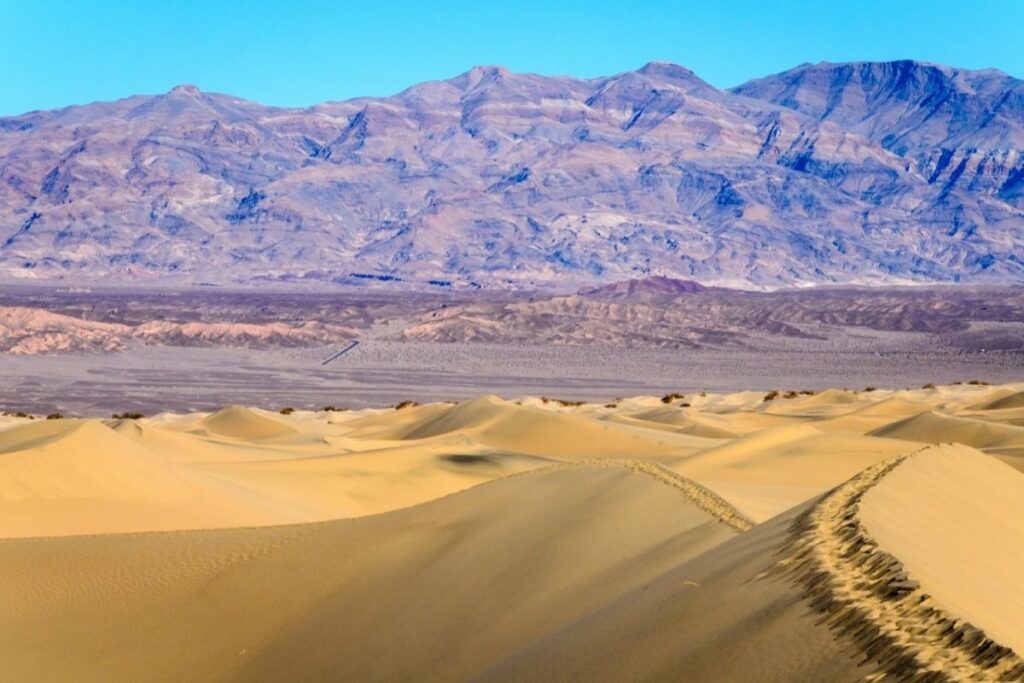
Joshua Tree National Park
Joshua Tree National Park is home to the famed non-tree plant species called Joshua Trees. Joshua Trees are actually a tree-like yucca plant. These unique plants dominated the Mojave Desert region of the park. The Colorado Desert region of the park does not have any Joshua trees but it is home to some great hiking and amazing rock formations.
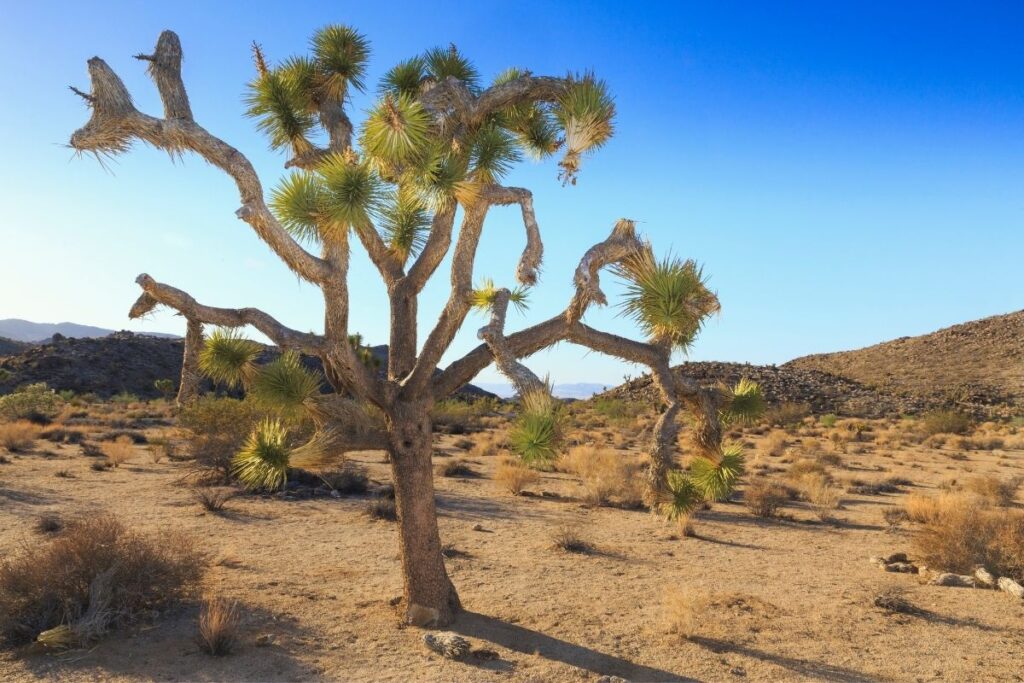
Lassen Volcanic National Park
Lassen Volcanic National Park is a volcano national park. The park is dominated by Lassen Peak which is the southernmost volcano of the Cascade range. While the last eruption was in 1915 but the park is still home to many active fumaroles and other volcanic features.
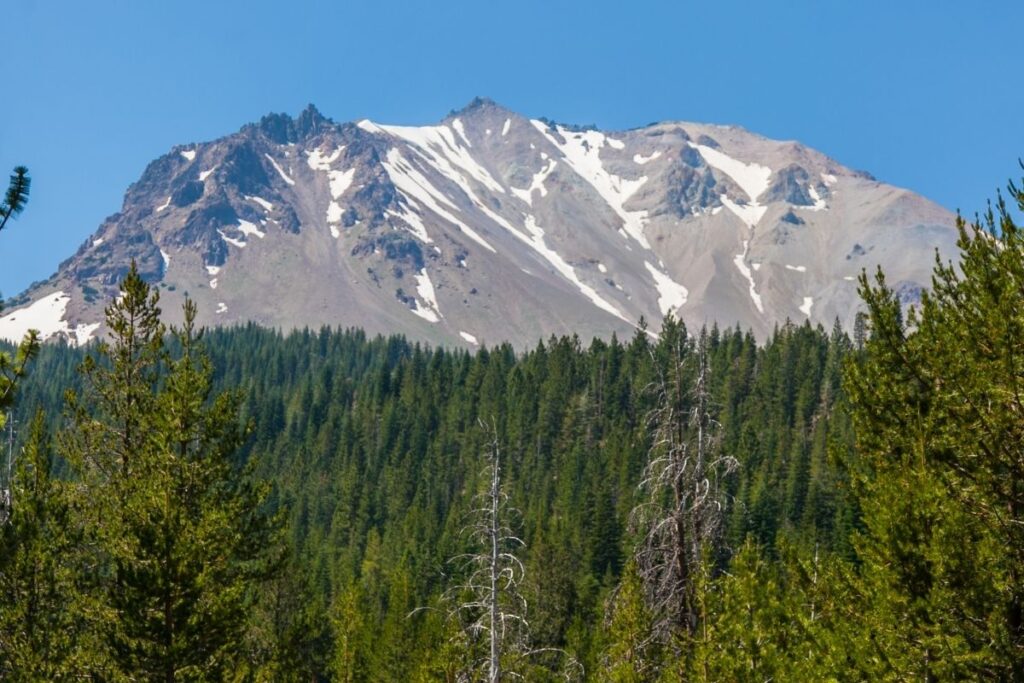
Pinnacles National Park
Pinnacles National Park is one of the smallest national park in California and one of my personal favorites. I get why some people are unimpressed with this small park, but they are just wrong. The park is home to a couple of caves and some tower hills of rocks. But the best part is that it is the BEST national park to see the highly endangered would be extinct if it wasn’t for a captive breeding program California Condors.
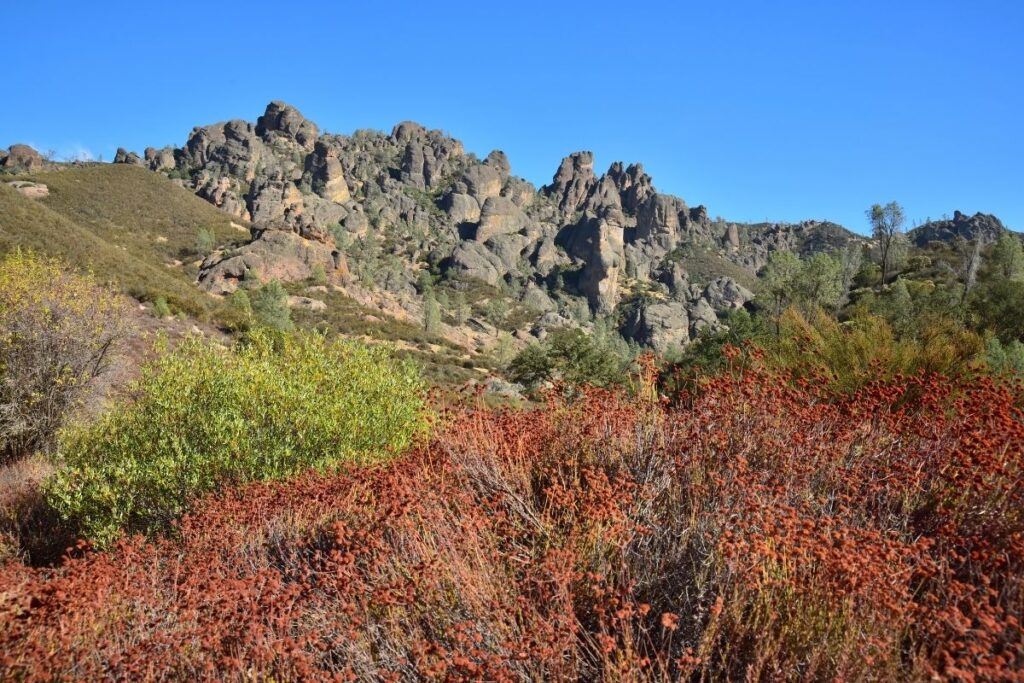
Redwoods National and State Parks
Redwoods National and State Parks is the home of the coastal redwoods. These trees are some of the oldest and tallest trees in the world. The park is made up of a series of federal and state lands and is home to several different groves of these trees. The park also protects Pacific coastlines, prairies, and rivers.
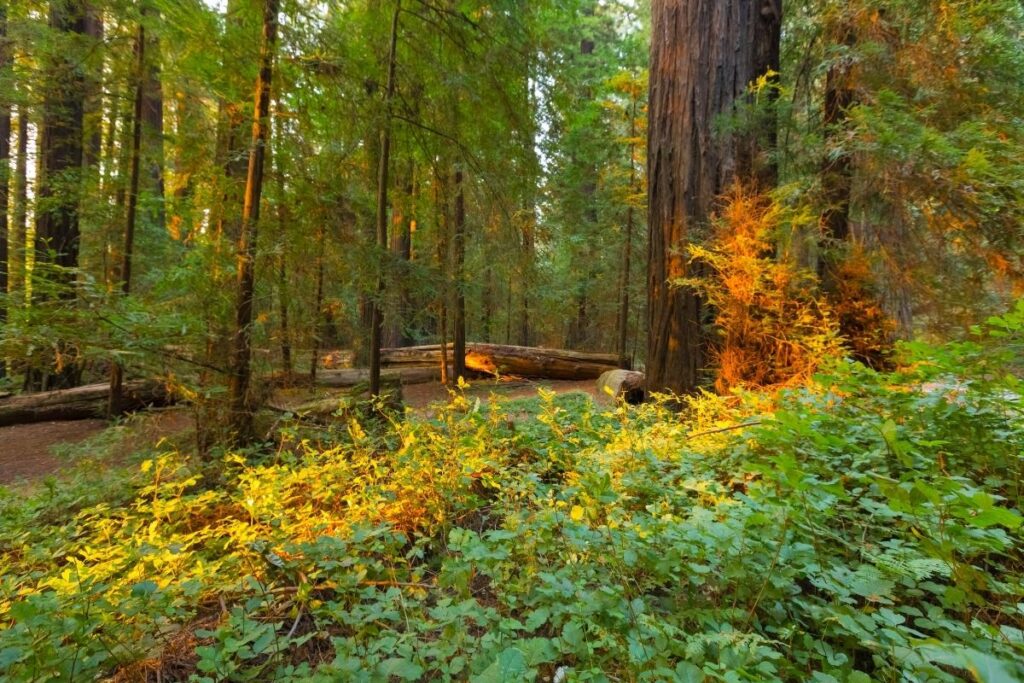
Sequoia & Kings Canyon National Parks
Sequoia and Kings Canyon National Parks are two separate national parks that are right next to each other and administered as one national park. These parks are home to some of the largest trees by volume including General Sherman Tree which is the world’s largest tree. Both parks protect parts of the High Sierra mountains and are excellent for hiking and backpacking.
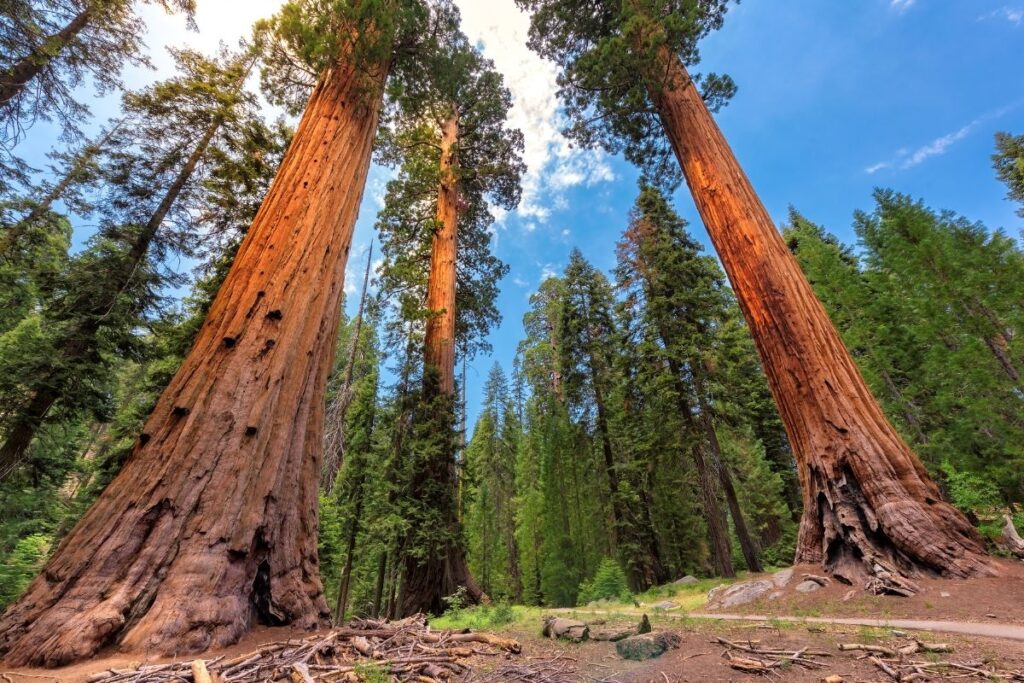
Yosemite National Park
Yosemite National Park is the crown jewel of California’s national parks and is the oldest legally protected landscape in the United States. It can be said that the American Conservation movement began in Yosemite. It was the majesty of Yosemite Valley that inspired men such as John Muir and others to fight to protect these landscapes from development.
Yosemite Valley is home to some of the most impressive and well-known landmarks in the park system such as El Capitan, Bridal Veil Falls, Half Dome, and Glacier Point. (Here is my suggested itinerary for one day in Yosemite or two days in Yosemite.)
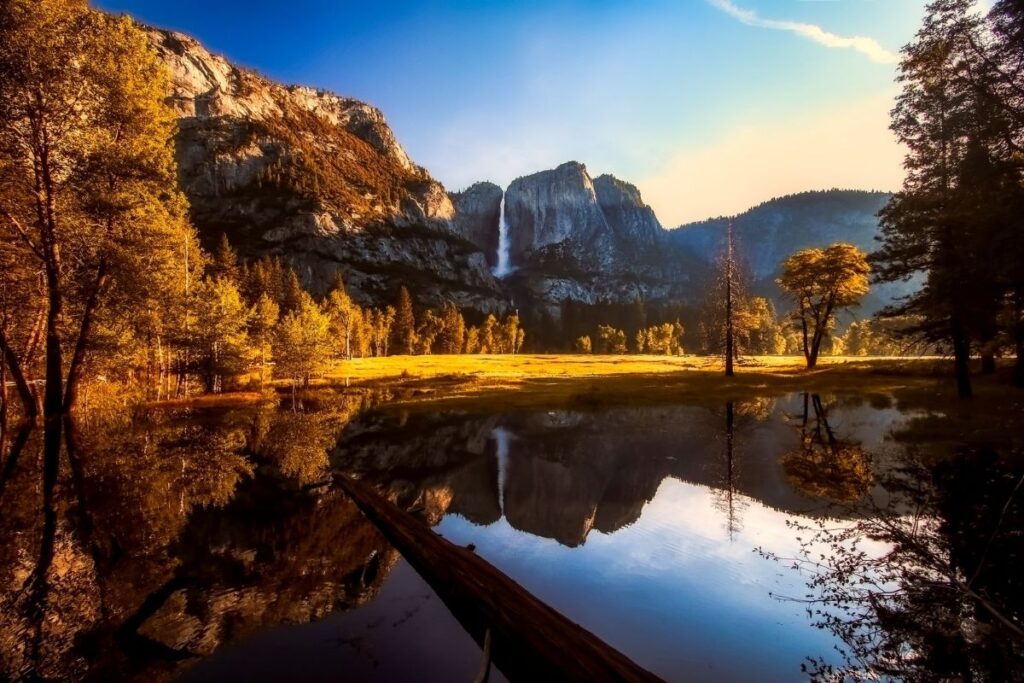
Other National Park Service in California
Here are the nineteen other National Park units in California.
- Cabrillo National Monument
- Castle Mountains National Monument
- César E. Chávez National Monument
- Devils Postpile National Monument
- Eugene O’Neill National Historic Site
- Fort Point National Historic Site
- Golden Gate National Recreation Area
- John Muir National Historic Site
- Lava Beds National Monument
- Manzanar National Historic Site
- Mojave National Preserve
- Muir Woods National Monument
- Point Reyes National Seashore
- Port Chicago Naval Magazine National Memorial
- Rosie the Riveter/World War II Home Front National Historical Park
- San Francisco Maritime National Historical Park
- Santa Monica Mountains National Recreation Area
- Tule Lake National Monument
- Whiskeytown-Shasta-Trinity National Recreation Area
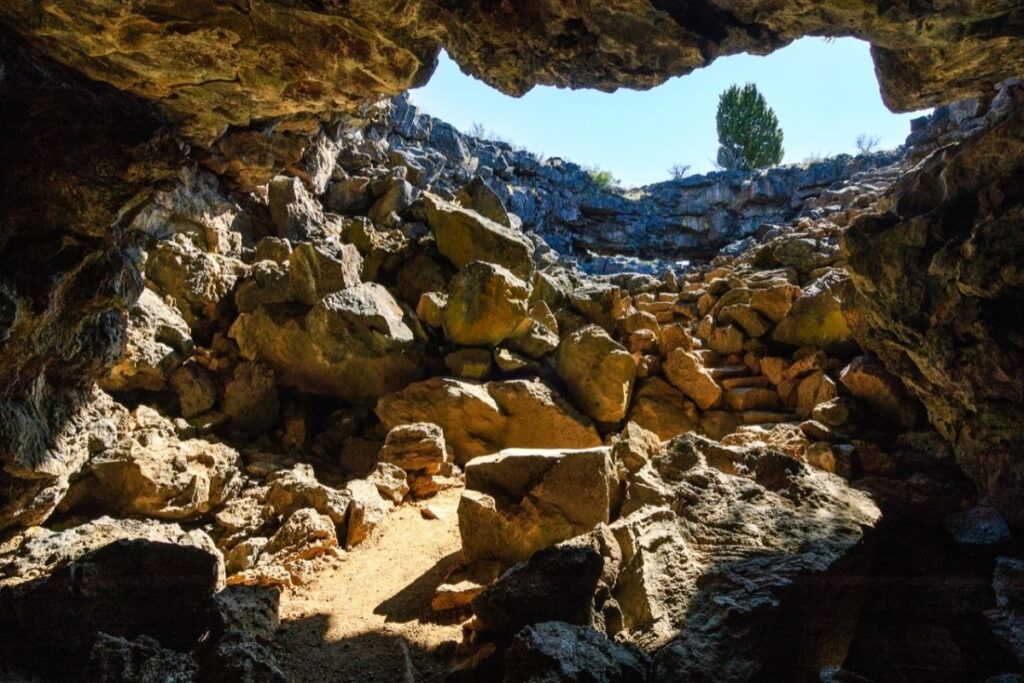
Colorado
Colorado has four units holding the title of National Park
Black Canyon of the Gunnison National Park
Black Canyon of the Gunnison National Park is Colorado’s least visited and least well-known national park. The highlight of the park is the steep and narrow Black Canyon of the Gunnison. This canyon is one of the steepest in North America. The walls are so steep that it is hard to tell what color the canyon rock is hence the blackish color and the canyon’s name.
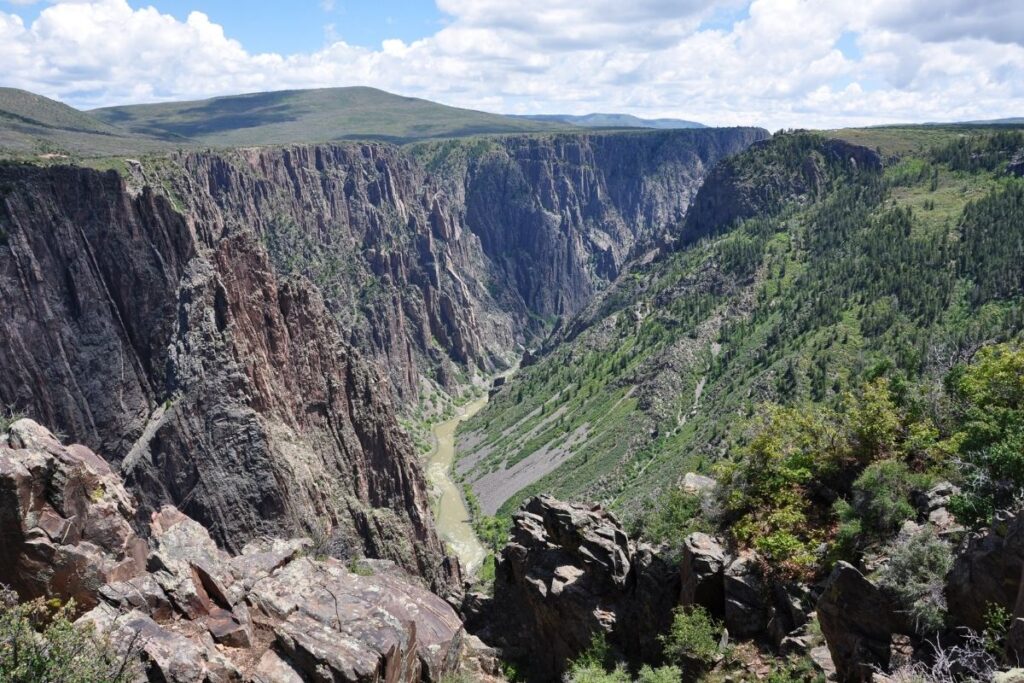
Great Sand Dunes National Park and Preserve
Great Sand Dunes National Park and Preserve is home to 1.2 cubic miles of sand along with the tallest sand dunes in North American. The dunes sit at the base of the Sangre de Cristos Range making for an impressive contrast between the dunes and mountains. The park is home to alpine tundra, subalpine forests, montane woods, and a snow-fed seasonal creek that is fun to play in.
Like many Alaskan National Park, Great Sand Dunes National Park and Preserve is actually two National Park Service units – Great Sand Dunes National Park and Great Sand Dunes National Preserve that are managed as a single park.
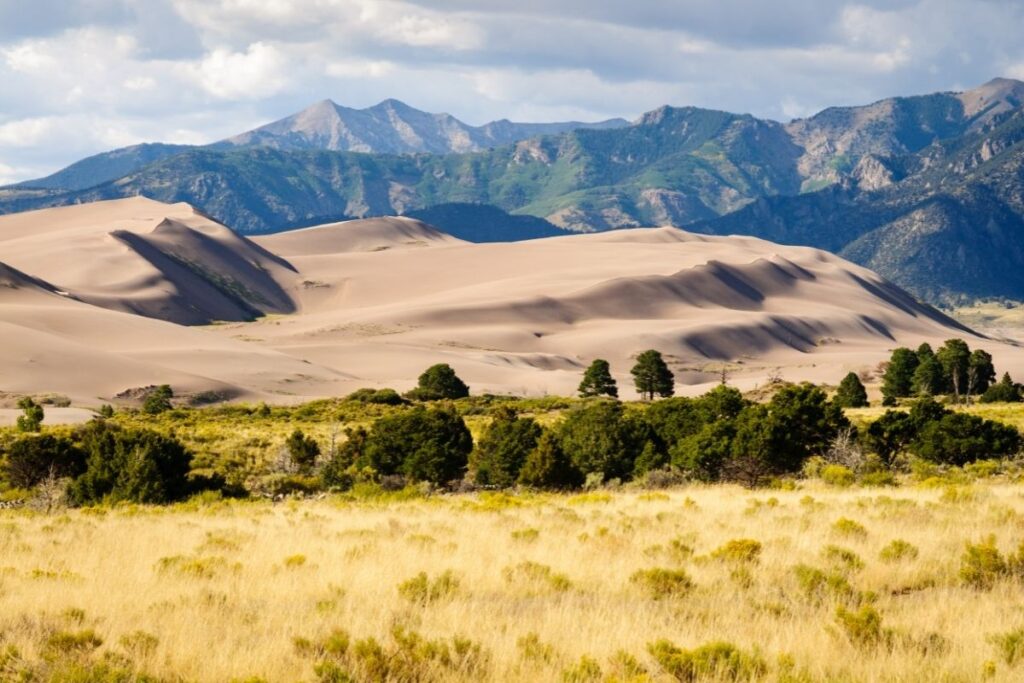
Mesa Verde National Park
Mesa Verde National Park is home to some of the best-preserved Ancestral Puebloan cliff dwellings. There are more than 600 cliff dwellings and more than 5,000 archeological sites within the park.
Most of the cliff dwellings are inaccessible to the public but ranger-guided tours are offered to some of the larger and more impressive dwellings such as Cliff Palace.
Mesa Verde National Park is a UNESCO World Heritage Site.
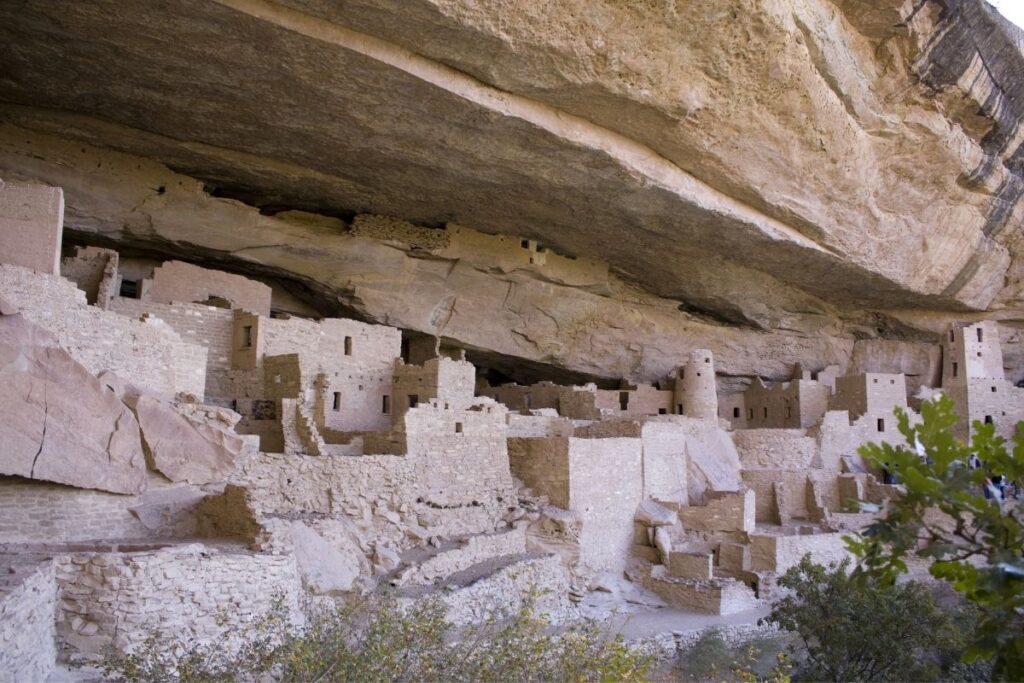
Rocky Mountain National Park
Rocky Mountain National Park is the most popular and busiest of Colorado’s National Parks. This mountainous national park is the headwaters for the Colorado River and has a range of environments from forest to tundra. The park has several glaciers, rugged mountains, and some amazing wildlife. Of the 53 14,000 foot mountains in Colorado, only one is located in Rocky Mountain National Park. Longs Peak is a popular climb.
Rocky Mountain National Park is the world’s first World Biosphere Reserve.
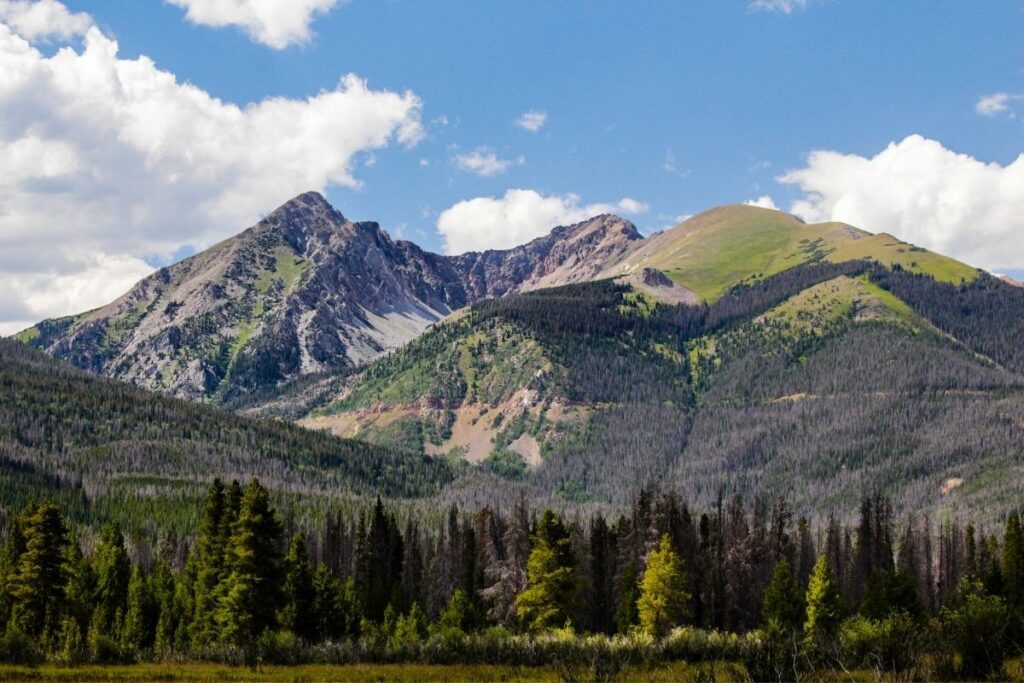
Other National Park Units in Colorado
Here are the eight other National Park units in Colorado.
- Bent’s Old Fort National Historic Site
- Colorado National Monument
- Curecanti National Recreation Area
- Dinosaur National Monument (CO, UT)
- Florissant Fossil Beds National Monument
- Hovenweep National Monument (CO, UT)
- Sand Creek Massacre National Historic Site
- Yucca House National Monument
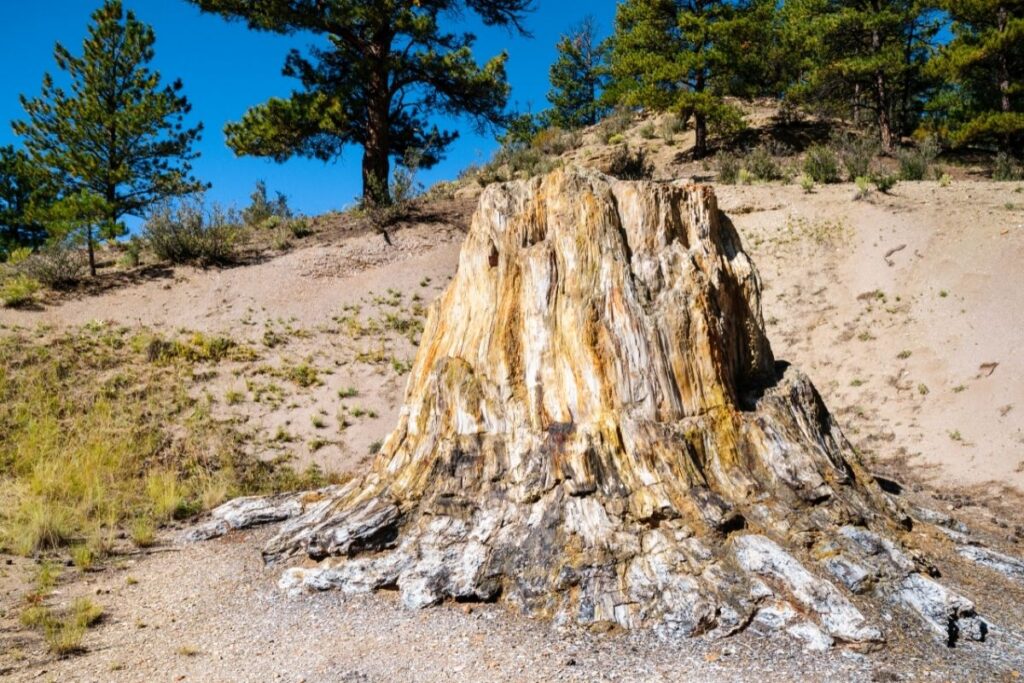
Guam
Guam has one unit and it doesn’t hold the title of “National Park.”
Other National Parks Units in Guam.
Here is the one National Park unit in Guam.
- War in the Pacific National Historical Park
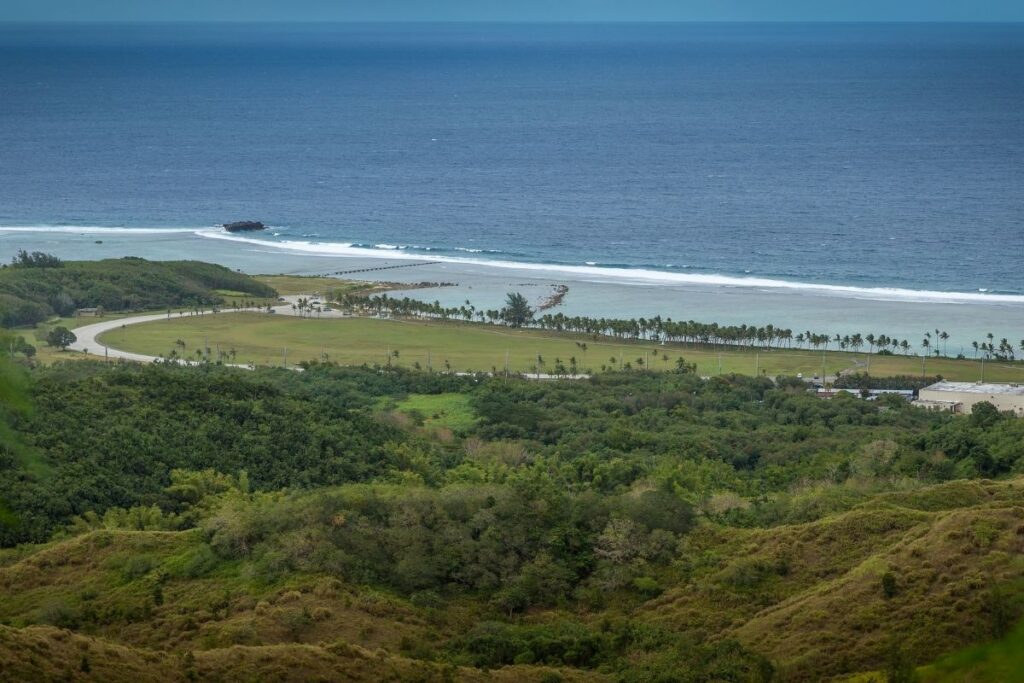
Hawaii
Hawaii has two units holding the title of National Park.
Haleakalā National Park
Haleakalā National Park is named for the dormant Haleakalā volcano and is located on the island of Maui. The park is renowned for its volcanic landscapes, its sunrises/sunsets, and stargazing. The park is also a good place to see the Nēnē, Hawaiian geese.
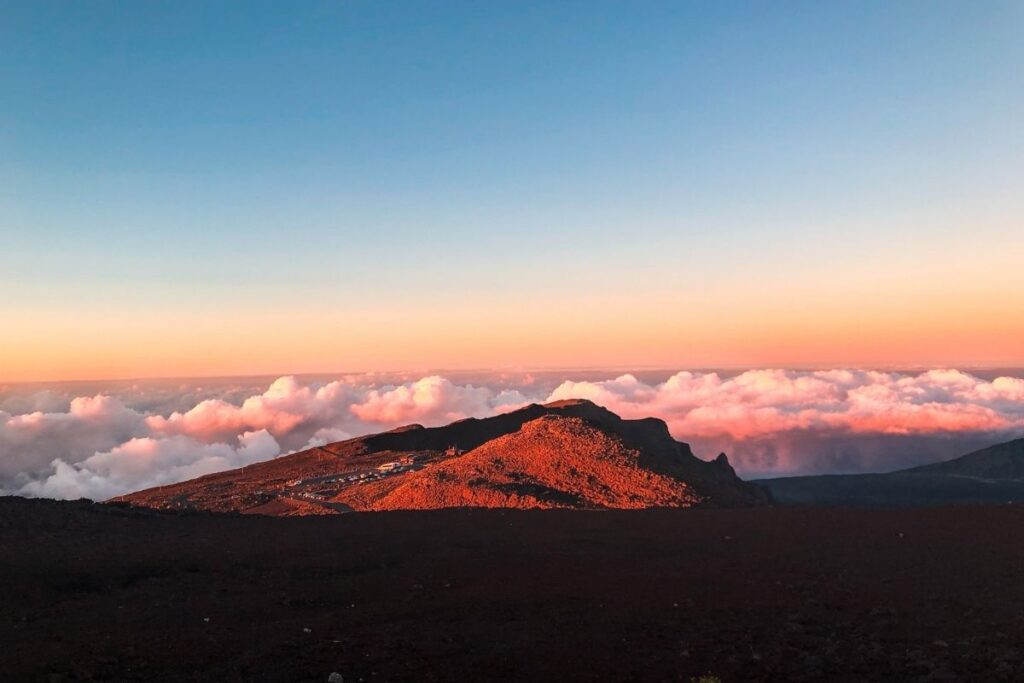
Hawaii Volcanoes National Park
Hawaii Volcanoes National Park is located on the Big Island. The park’s central feature is a pair of volcanoes – Kīlauea and Mauna Loa. Kīlauea is the world’s most active volcano and Mauna Loa is the world’s most massive shield volcano. The most recent eruption was on December 20, 2020 at the Halemaʻumaʻu crater.
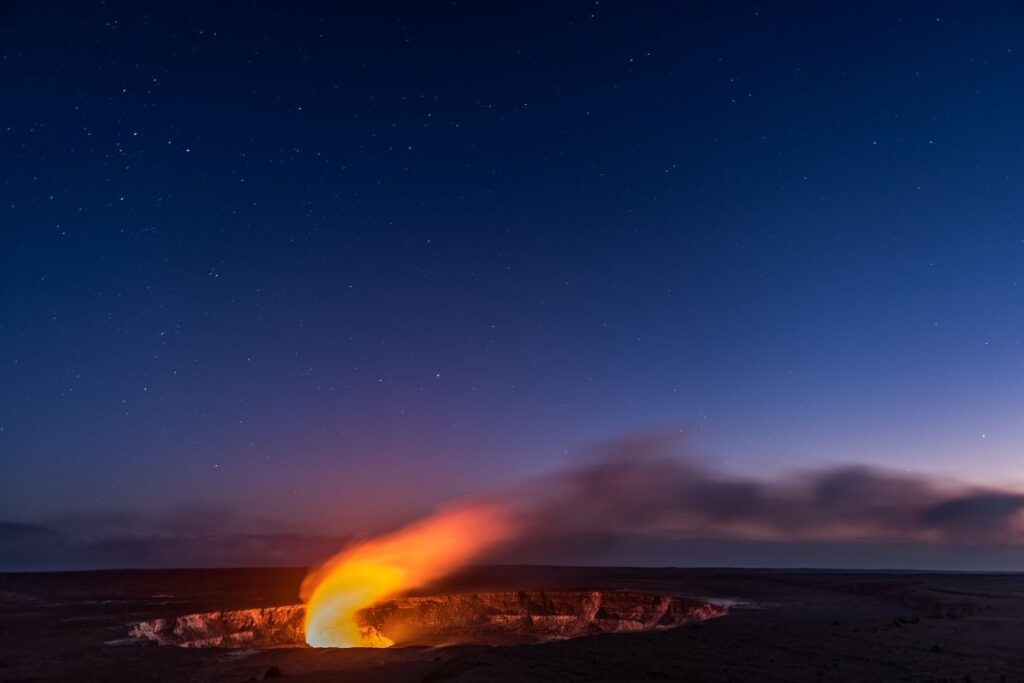
Other National Parks Units in Hawaii
Here are the six other National Park units in Hawaii.
- Honouliuli National Historic Site
- Kalaupapa National Historical Park
- Kaloko-Honokohau National Historical Park
- Pearl Harbor National Memorial
- Pu’uhonua O Honaunau National Historical Park
- Pu’ukohola Heiau National Historic Site
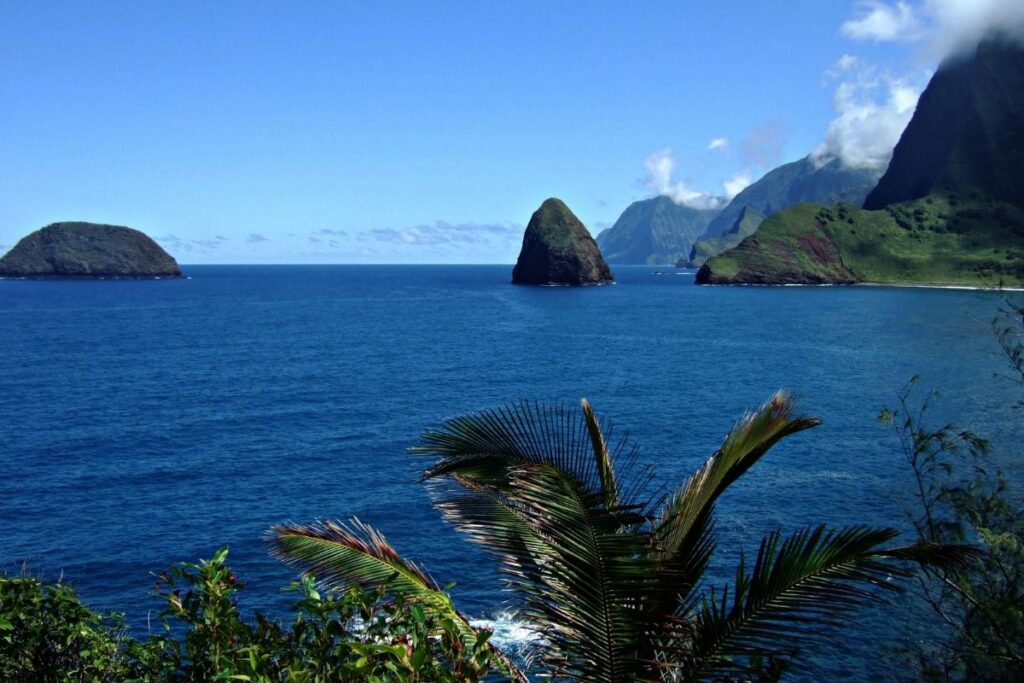
Idaho
Idaho is home to a small section of Yellowstone National Park. You can learn more about Yellowstone under Wyoming.
Other National Parks Units in Idaho
Here are the six other National Park units in Idaho.
- City of Rocks National Reserve
- Craters of the Moon National Monument
- Craters of the Moon National Preserve
- Hagerman Fossil Beds National Monument
- Minidoka National Historic Site
- Nez Perce National Historical Park
- Ant and Yellowjacket
- Asa Smith Mission
- Camas Meadows Skirmish Site
- Camas Prairie
- Canoe Camp
- Clearwater Battlefield
- Confluence Overlook
- Cottonwood Skirmishes
- Coyote’s Fishnet
- Craig Donation Land Claim
- Fort Lapwai
- Hasotino
- Heart of the Monster
- Lenore
- Lewis and Clark Long Camp
- Lolo Pass and Trail
- Looking Glass’ 1877 Campsite
- McBeth House
- Musselshell Meadow
- Northern Idaho Indian Agency
- Pierce Court House
- Spalding Sites
- St. Joseph’s Mission
- Tolo Lake
- Weippe Prairie
- Weis Rockshelter
- White Bird Battlefield
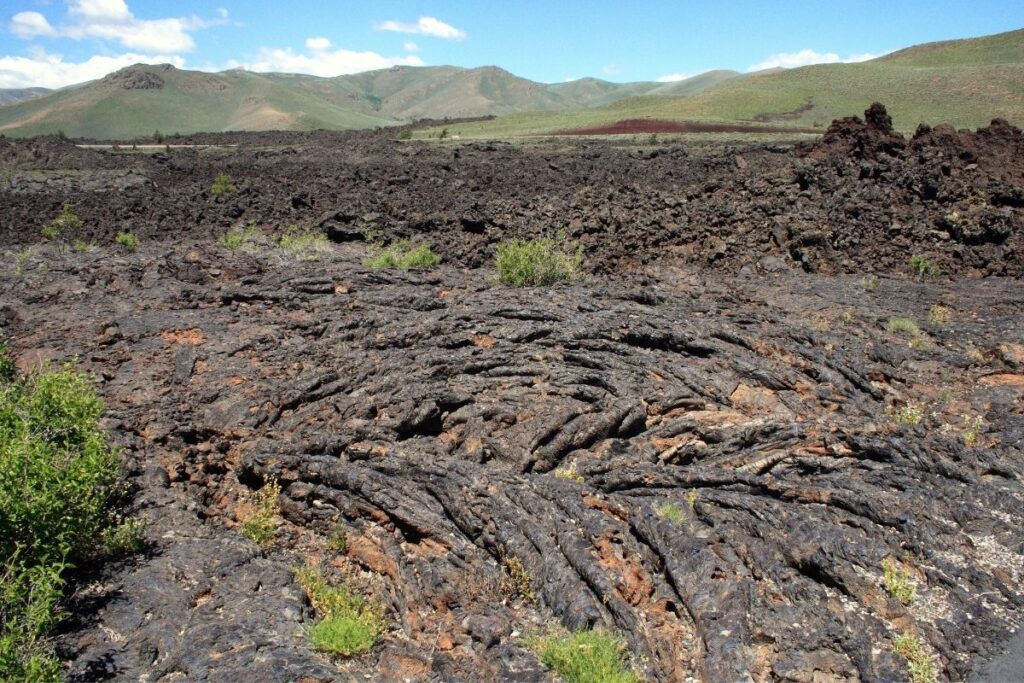
Montana
Montana is home to two units holding the title of National Park one of those parks is Yellowstone National Park. You can learn more about Yellowstone under Wyoming.
Glacier National Park
Glacier National Park is often called the “Crown of the Continent” and what a crown it is. The park is dominated by two subranges of the Rocky Mountains. These mountains form a range of alphine lakes, glaciers and epic mountain valley. Glacier’s famed Going-to-the-Sun Road is the most scenic highway in the United States.
Glacier National Park borders Canada and Canada’s Waterton Lakes National Park. The two parks are known as Waterton-Glacier International Peace Park which is a UNESCO World Heritage Site, Biosphere Reserve, and the first transboundary International Dark Sky Park.
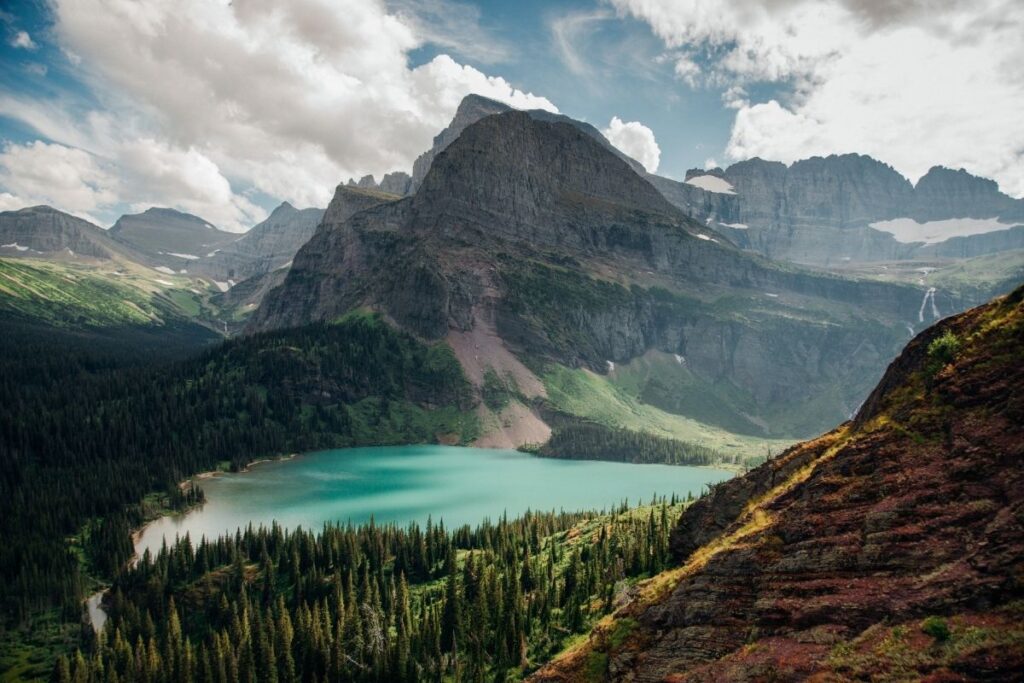
Yellowstone National Park
A small section of Yellowstone National Park is in Montana. This sliver included the North and Northwest entrances of Yellowstone. The famed Roosevelt Arch is located just inside the North Entrance of the park near Gardiner, Montana. If you’d like to learn more about Yellowstone see the Wyoming section.
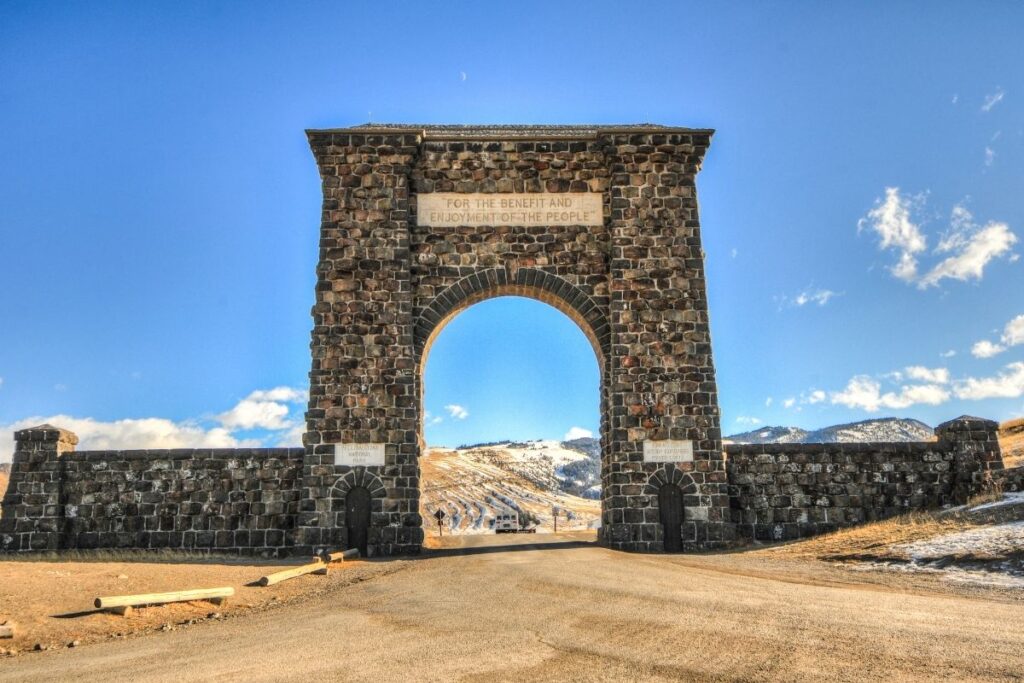
Other National Parks Units in Montana
Here are the six other National Park units in Montana.
- Big Hole National Battlefield
- Bighorn Canyon National Recreation Area (MT, WY)
- Fort Union Trading Post National Historic Site (ND, MT)
- Grant-Kohrs Ranch National Historic Site
- Little Bighorn Battlefield National Monument
- Nez Perce National Historical Park (ID, MT, OR, WA)
- Bear Paw Battlefield
- Cayon Creek
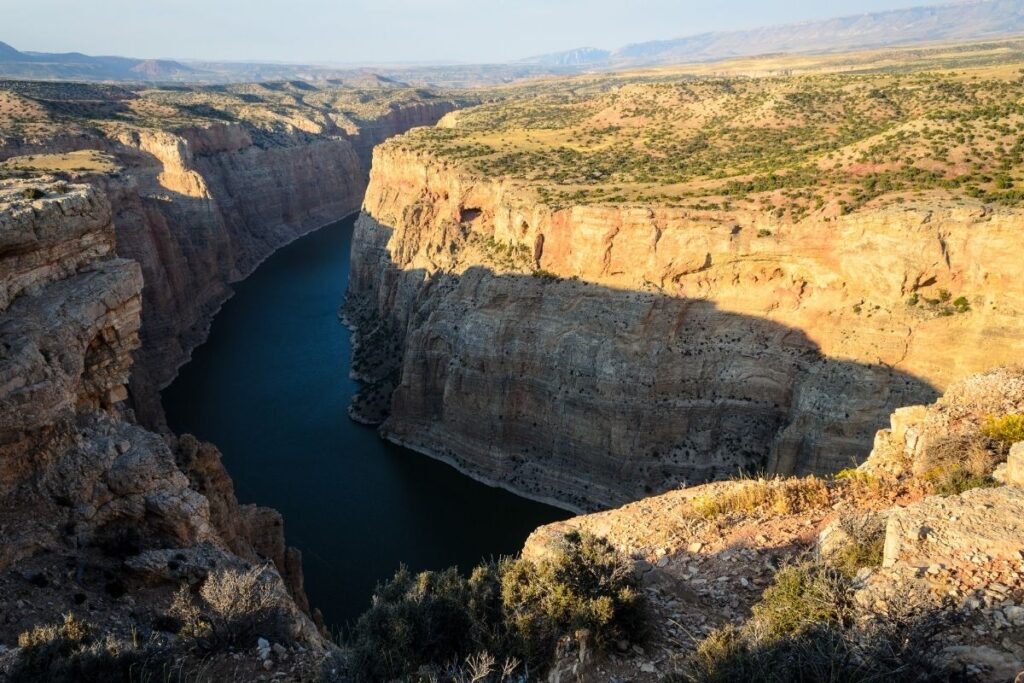
Nevada
Death Valley National Park
The VAST majority of Death Valley Natioanl Park is located in Califonria. The Nevada section of Death Valley is a small water-filled cavern known as Devils Hole. Devils Hole is the ONLY natural habitat of the Devils Hole pupfish, a critically endangered fish. Visitors to Devils Hole are limited to a caged structure above the hole but it is worth a quick visit to check out the area. To learn more about Death Valley see the Cailfornia section.
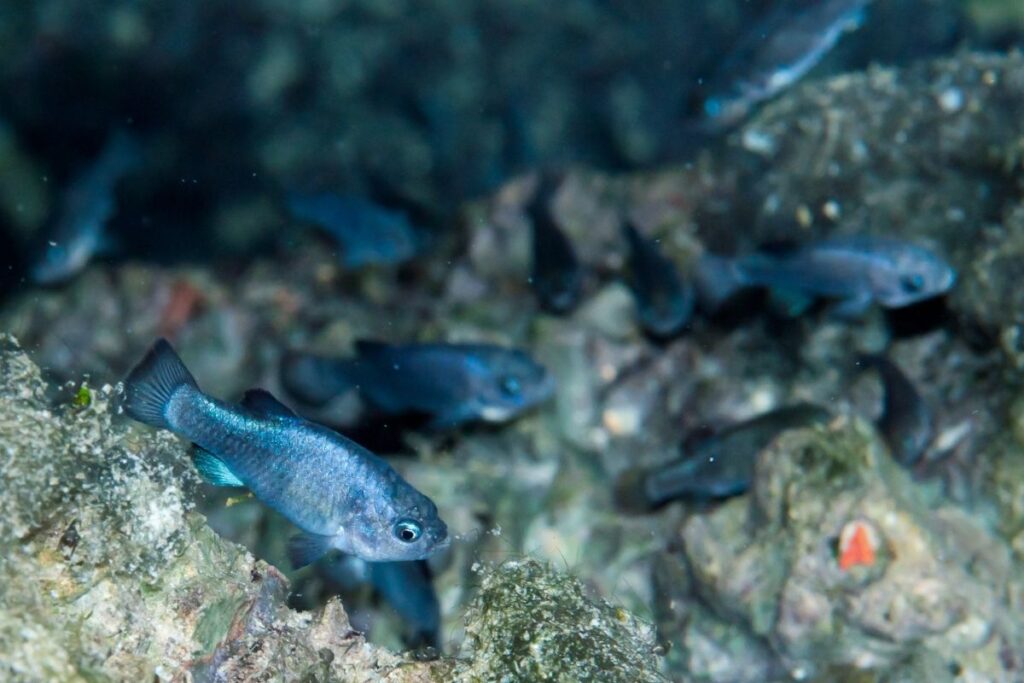
Great Basin National Park
Great Basin National Park is one of the least visited national park that doesn’t require a boat or plane to reach. The park is home to an acient species of tree known as the Bristlecone Pines. The oldest Pines in the park are estimated to be 5,000 years old. Byond the trees, the park has excellent star gazing and an interesting cave known as Lehman Caves.
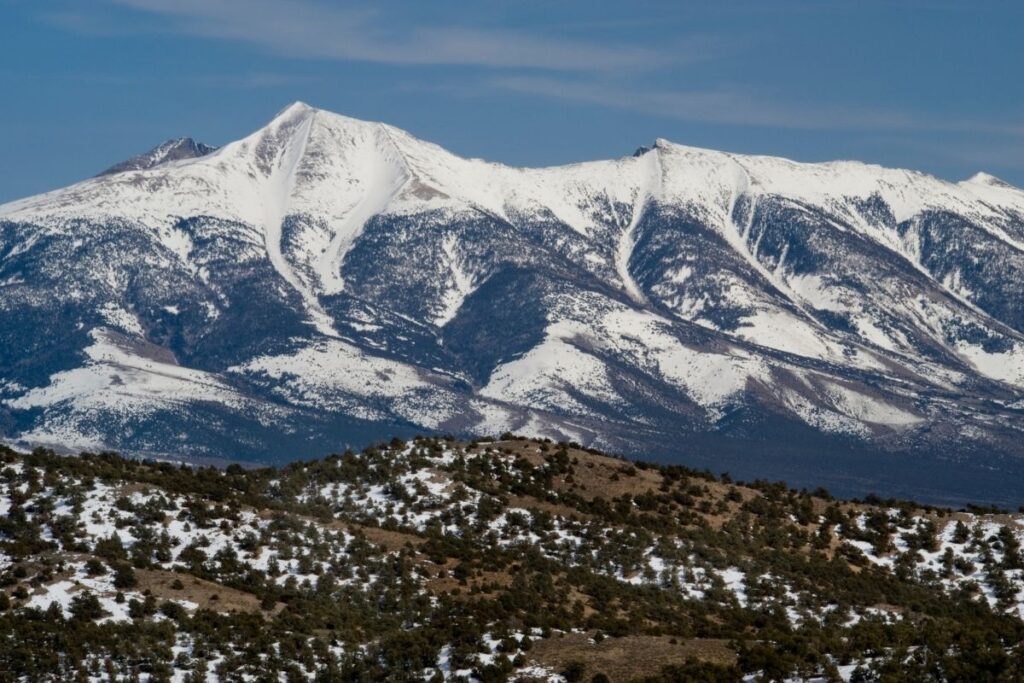
Other National Park Units in Nevada
Here are the two other National Park units in Nevada.
- Lake Mead National Recreation Area
- Tule Springs Fossil Beds National Monument
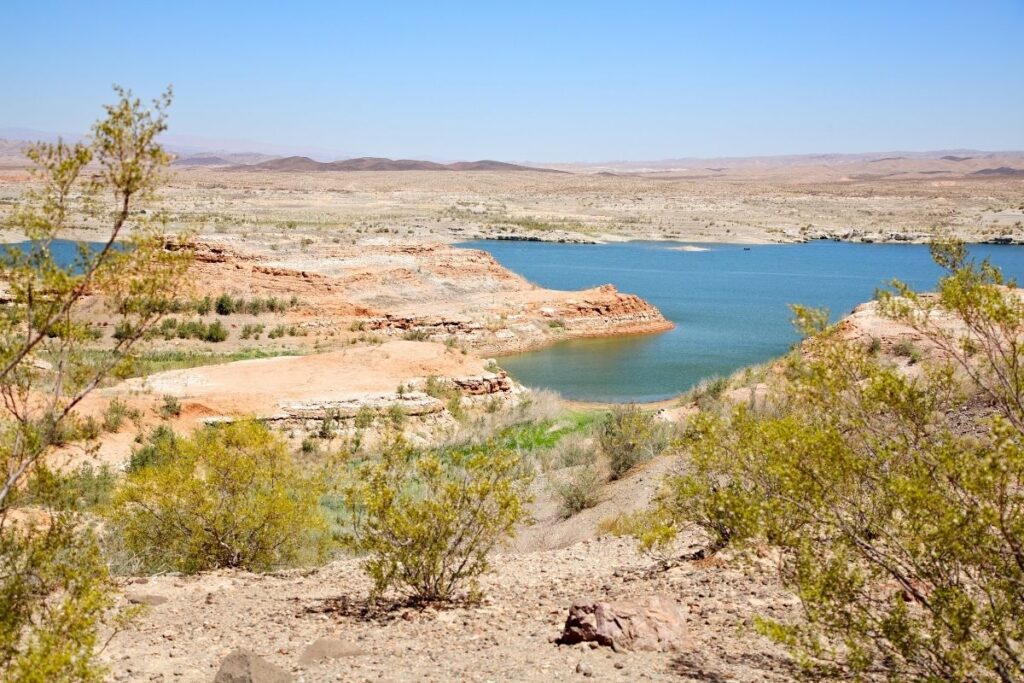
New Mexico
Carlsbad Caverns National Park
A park ranger once said that half a park’s fun is after dark, well in Carlsbad Caverns National Park half the fun is underground. Ok so it is more like 75% the fun is underground but Carlsbad Caverns is on of the cave national parks. The cave is full of talactites, stalagmites, columns, soda straws, draperies, and popcorn. There are many named rooms inside Carlsbad. The most impressive and largest is the Big Room which is almost 4,000 ft long and 625 ft wide and 255 ft high.
Carlsbad Caverns National Park is a UNESCO World Heritage Site.
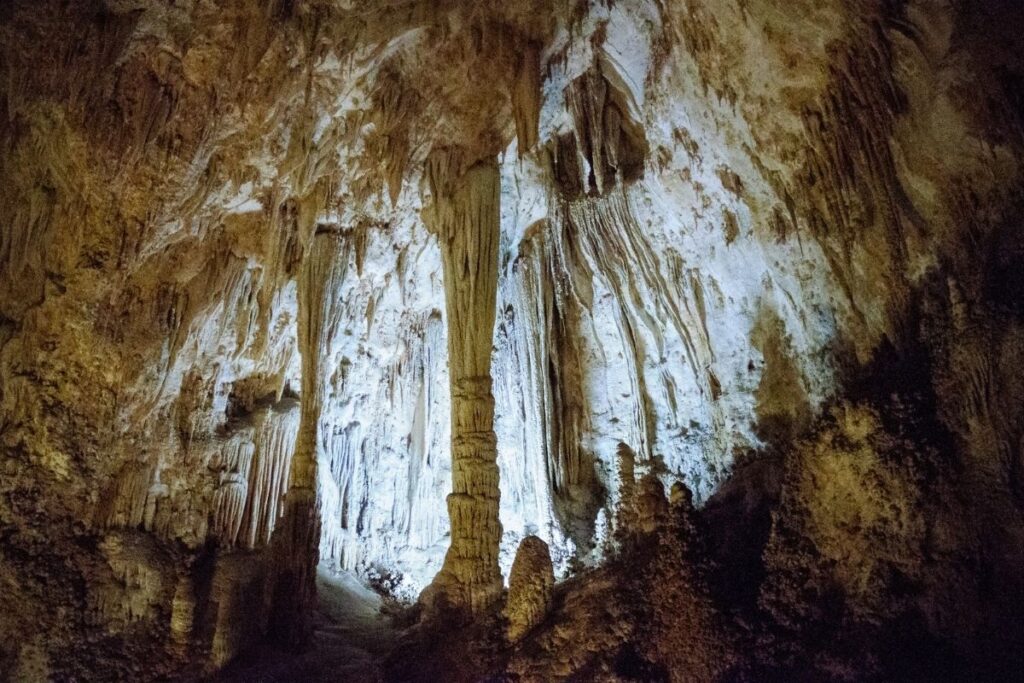
White Sands National Park
White Sands National Park is the newest national park on this list. Unlike the other sand dunes on this list, White Sand’s sand is made of gypsum rather than quartz. The gypsum is the cause of the white color. The dunefield is located in the Tularosa Basin and contain many of the common types of dunes such as transverse, barchan and paradbolic dunes. Visitors to the dunes can hike, sled and explore these amazing dunes.
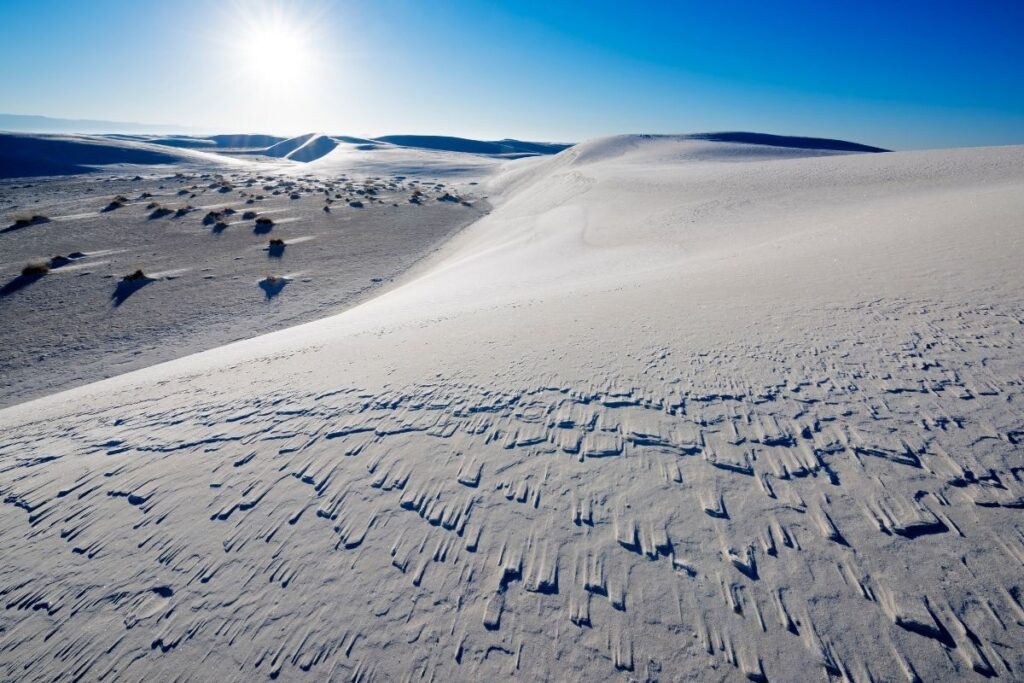
Other National Park Units in New Mexico
Here are the thirteen other National Park units in New Mexico.
- Aztec Ruins National Monument
- Bandelier National Monument
- Capulin Volcano National Monument
- Chaco Culture National Historical Park
- El Malpais National Monument
- El Morro National Monument
- Fort Union National Monument
- Gila Cliff Dwellings National Monument
- Manhattan Project National Historical Park
- Pecos National Historical Park
- Petroglyph National Monument
- Salinas Pueblo Missions National Monument
- Valles Caldera National Preserve
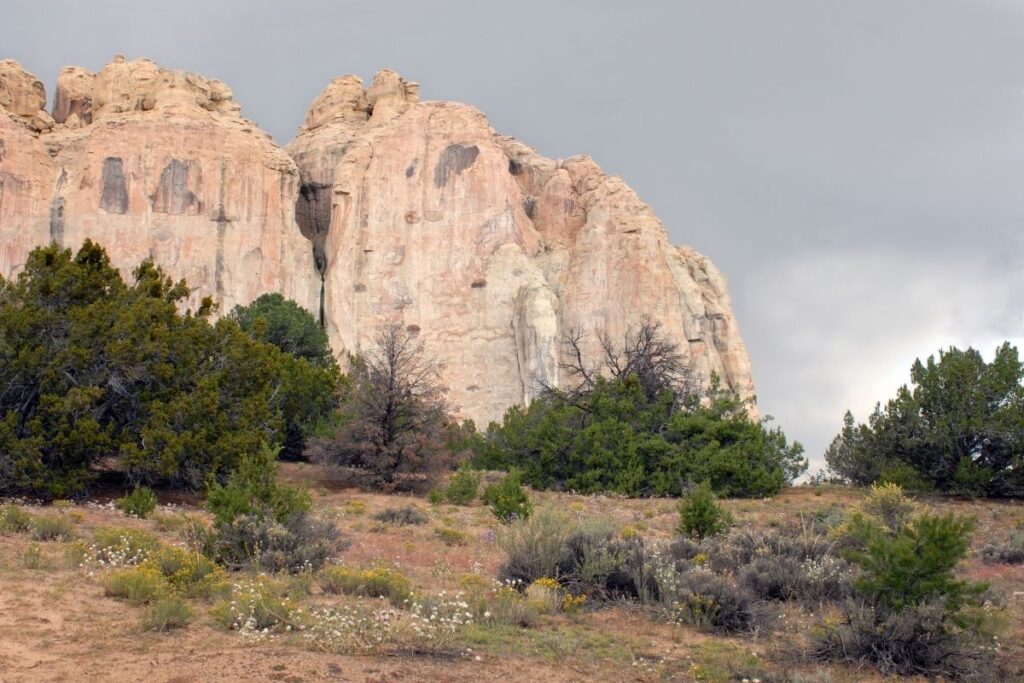
Northern Mariana Islands
There are currently no National Park Service units in Northern Mariana Islands. There is one associated site.
Oregon
Crater Lake National Park
Crater Lake National Park is one of the most unique parks. The park features a giant lake inside of a volcano caldera and the volcano-like island in the middle of the lake is actually a small volcano. About 7,700 years ago, Mount Mazama erupted in spectacular fashion according to the stories handed down from the Native American people who witnessed the eruption. The powerful eruption caused the magma chamber to collapse and over time the crater filled with water.
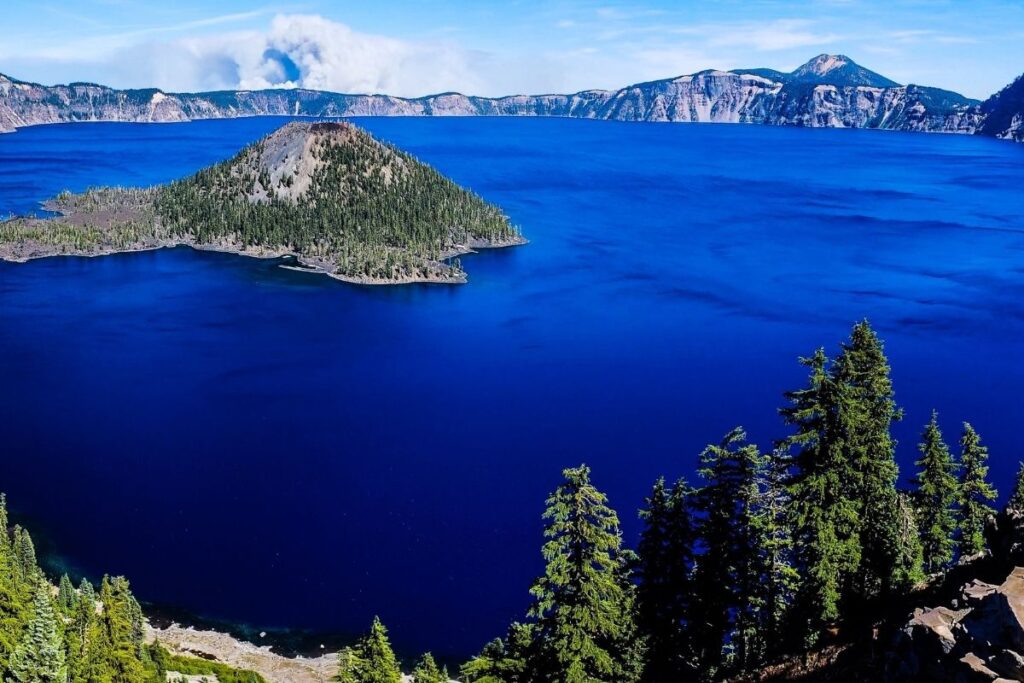
Other National Parks Units in Oregon
Here are the five other National Park units in Oregon.
- Fort Vancouver National Historic Site
- John Day Fossil Beds National Monument
- Lewis and Clark National Historical Park
- Nez Perce National Historical Park
- Dug Bar
- Joseph Canon Viewpoint
- Old Chief Joseph’s Gravesite
- Lostine Campsite
- Oregon Caves National Monument and Preserve
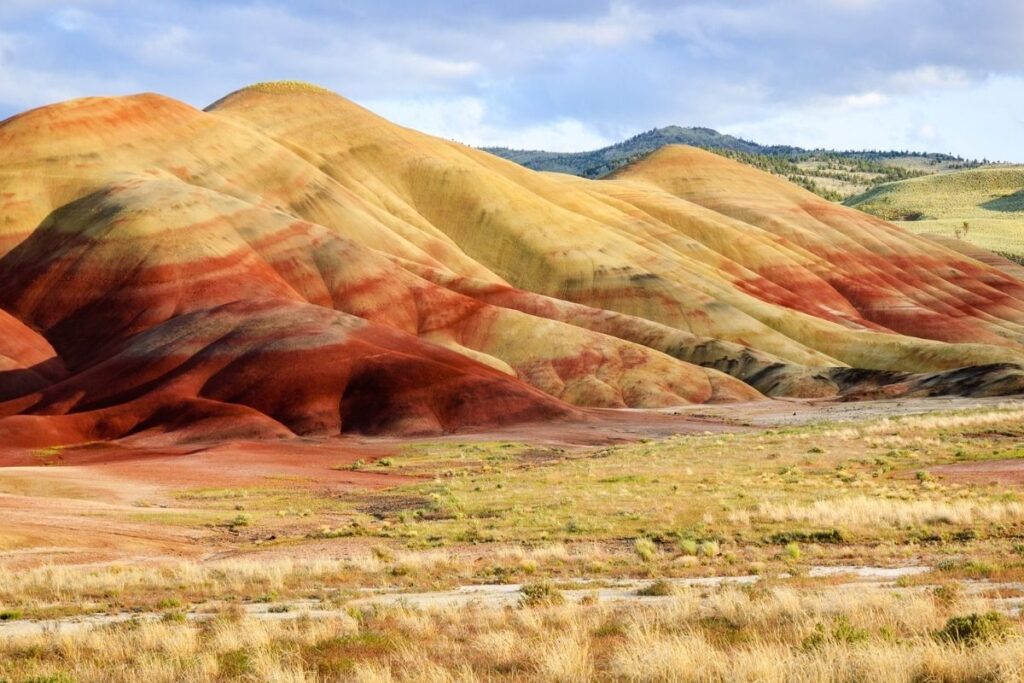
Utah
Utah has five units holding the title “National Park.” If you are looking to do a road trip through these five National Parks, here is my 1-week Utah National Park Road Trip Itinerary.
Arches National Park
Arches National Park is a national park full of arches. There are more than 2,000 sandstone arches in the park. This is the highest density of natural arches anywhere in the world. Of Utah’s five national parks, this is the park that is featured on the Utah license plate. The arch featured on the plate is the 52-ft freestanding arch named Delicate Arch. Many of the park’s arches are easily reached by short hiking trails.
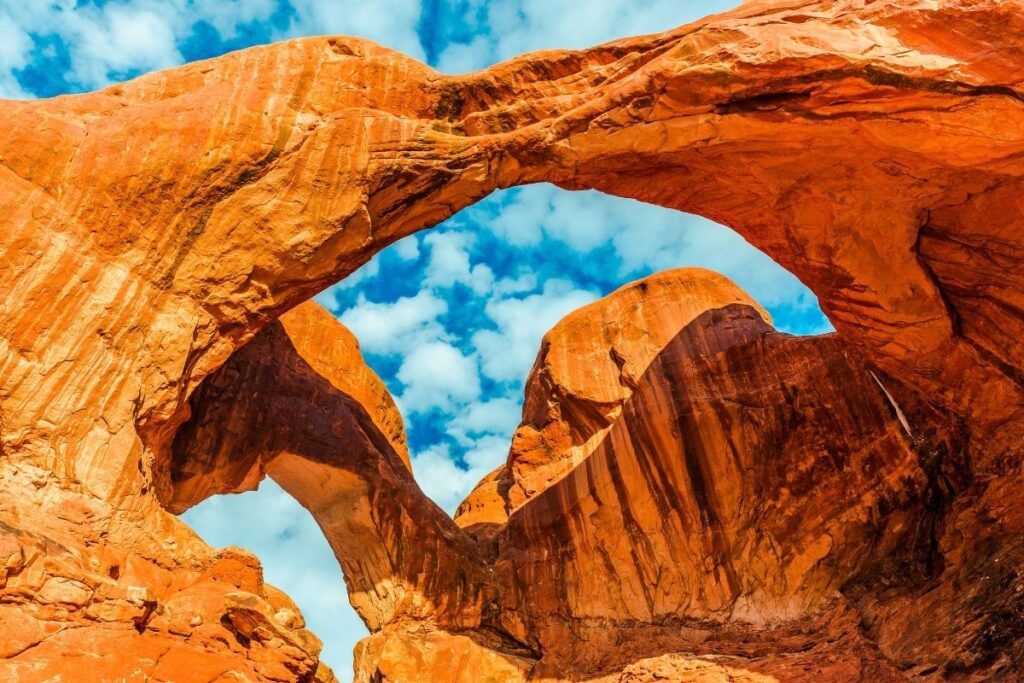
Bryce Canyon National Park
Bryce Canyon National Park is the park of the hoodoos. Hoodoos are tall, thin spires of rocks, and this park is FULL of them. They come in many different shapes and sizes and many of them have fun names like Thor’s Hammer, The Poodle, and Queen Victoria. The Bryce Amphitheater is a popular sunrise spot.
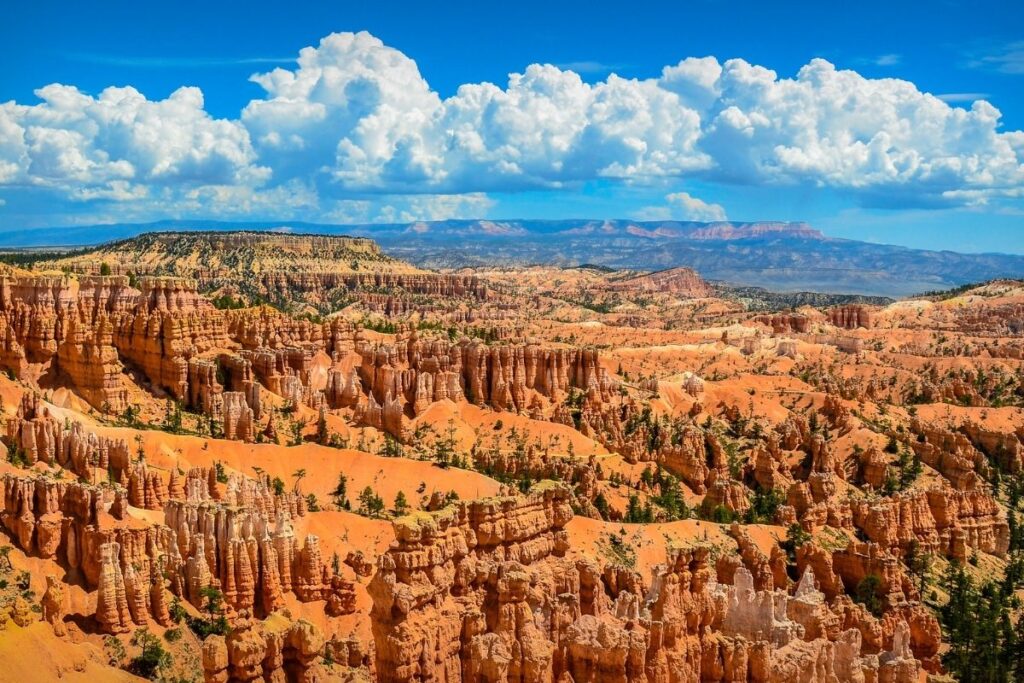
Canyonlands National Park
Canyonlands National Park is located just down the road from Arches National Park. Despite the proximity, these two parks have entirely different desert feels. Canyonlands is full of canyons as the name suggests. The park’s namesake canyons were carved by the Green and Colorado rivers. This park is huge and it has four distinct districts – Island in the Sky, the Needles, the Maze, and the combined rivers. Each area has its own set of actives and amazing places to explore.
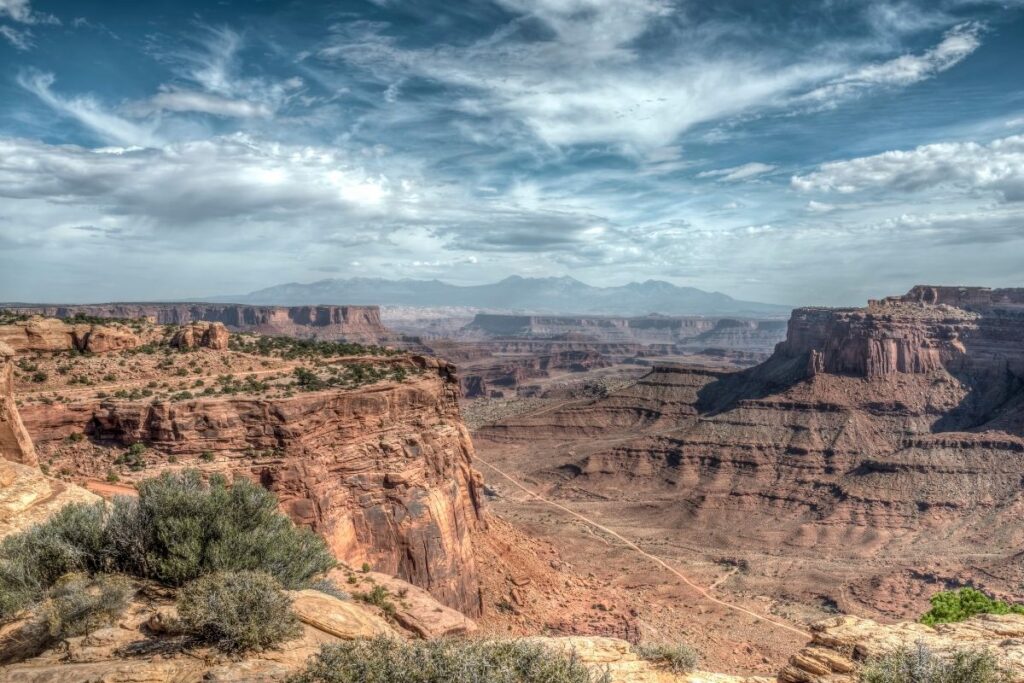
Capitol Reef National Park
Capitol Reef National Park is sort of the redhead step-child. The park is best described as taking a pinch of the other four Utah National Parks and blending it together. That is Capitol Reef plus fruit trees and pie. Don’t forget the pie. The park’s main rock formation is known as Waterpocket Fold and Navajo Sandstone that makes up the park’s canyons, rock towers, domes, cliffs, arches.
Now on to the pie. Back during the days of the US’s expansion westward, an area inside the park was found to be perfect for growing fruit trees and those orchards are still in use today. You can pick fruit and some of the fruit is used to make pies that are for sale within the park.
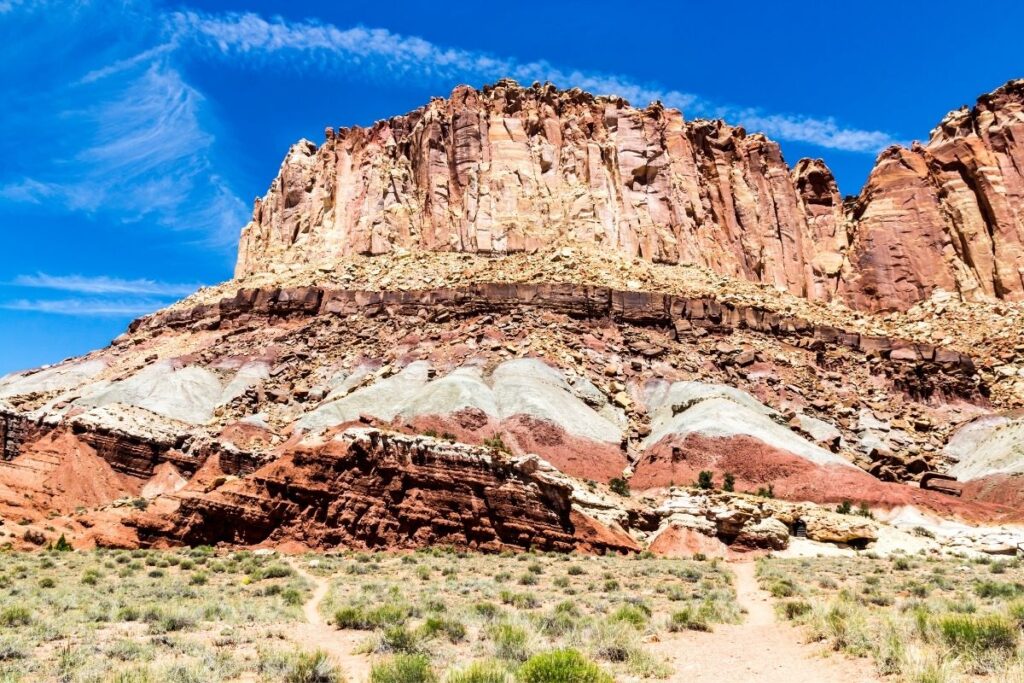
Zion National Park
Zion National Park is Utah’s crown jewel and one of the most iconic national parks. The park boasts two BUCKET list hikes in Angels Landing and the Narrow. There is also a third if you could Subway. This spectacular park was carved by the Virgin River at the junction of the Colorado Plateau, Great Basin, and the Mojave Desert regions. The park has a range of life zones and a highly diverse range of plant and animal species.
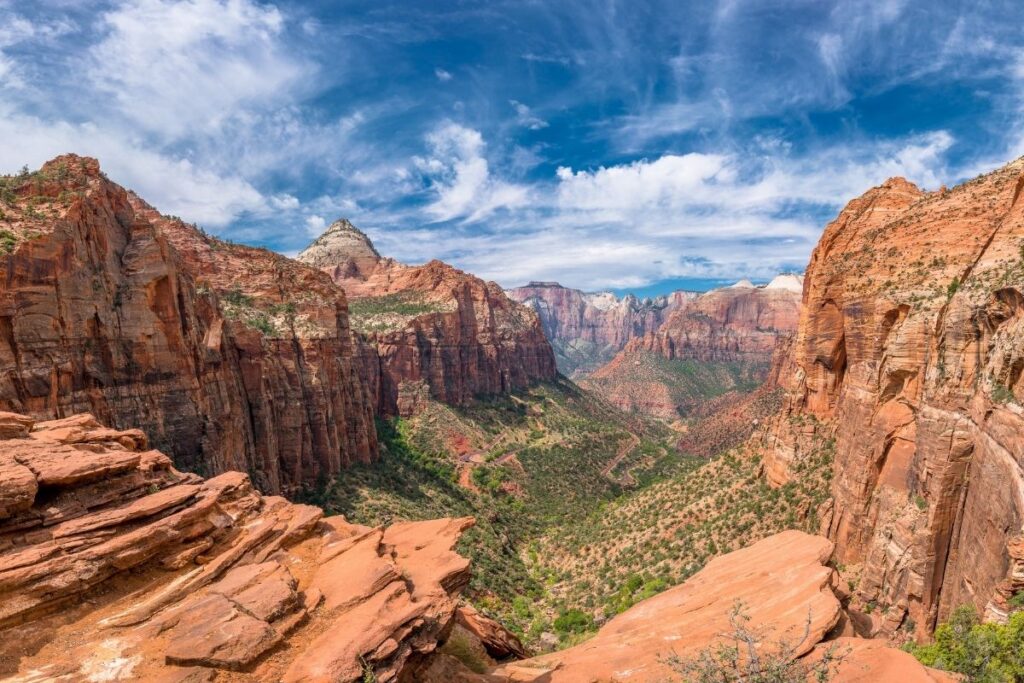
Other National Park Units in Utah
Here are the eight other National Park units in Utah.
- Cedar Breaks National Monument
- Dinosaur National Monument (CO, UT)
- Glen Canyon National Recreation Area (AZ, UT)
- Golden Spike National Historical Park
- Hovenweep National Monument (CO, UT)
- Natural Bridges National Monument
- Rainbow Bridge National Monument
- Timpanogos Cave National Monument
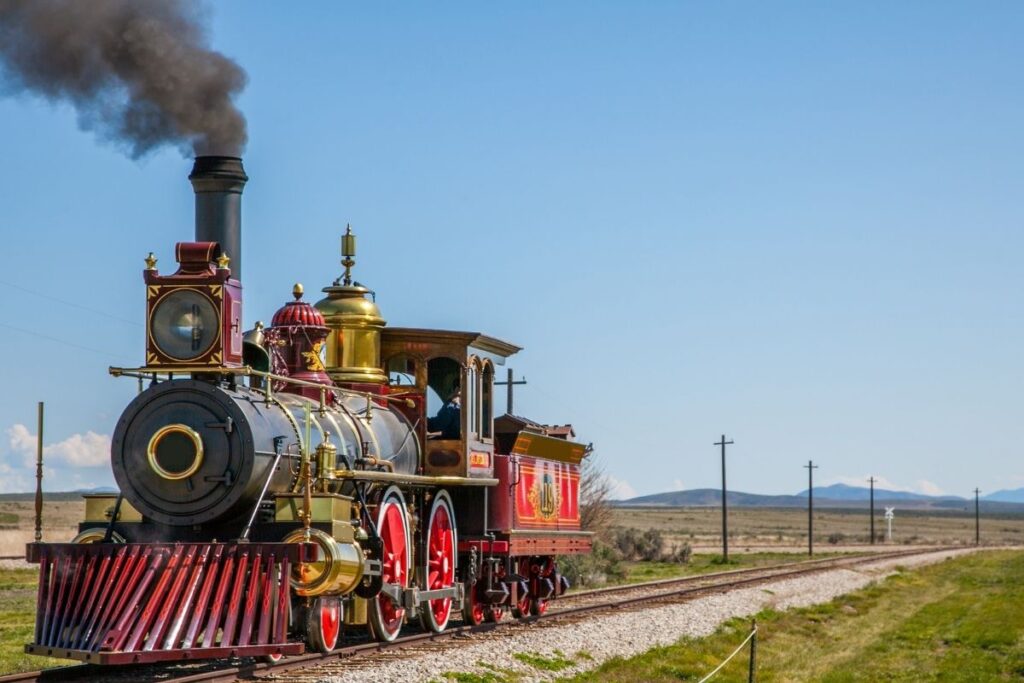
Washington
Mount Rainier National Park
Mount Rainier National Park is a volcano national park that holds a special place in my heart. This was my first National Park as well as the park I worked at for a summer. If we want to get technical if I hadn’t spent a summer at Rainier, I doubt this website would exist.
Mount Rainier is the tallest of the Cascade volcanoes at 14,411 ft and is the centerpiece of the park although you might not know it if you visit on a cloudy day (which is likely). The park has 260 miles of hiking trails including the 92 mile Wonderland Trail.
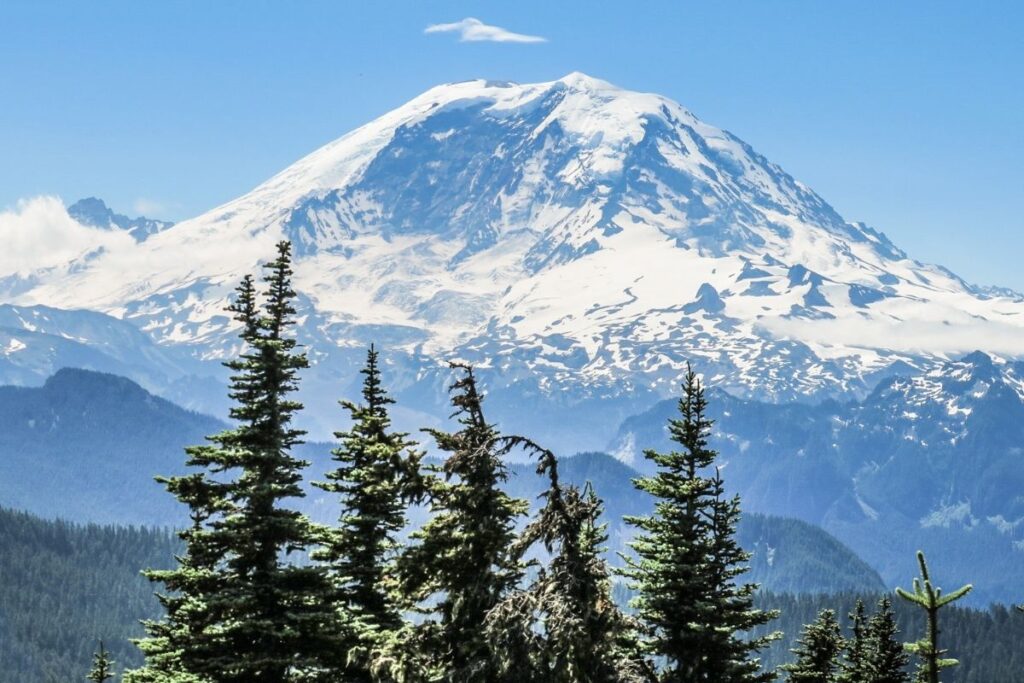
North Cascades National Park
North Cascades National Park is Washington’s northernmost national park along with one of the least visited national parks in the US. It is sort of shocking that a park that is a couple of hours drive from Seattle doesn’t draw the crowds but this is a rugged park that isn’t for beginner hikers. The park has about 400 miles of trail and 300 glaciers. The park is part of the North Cascade Complex that includes Ross Lake National Recreation Area and Lake Chelan National Recreation Area.
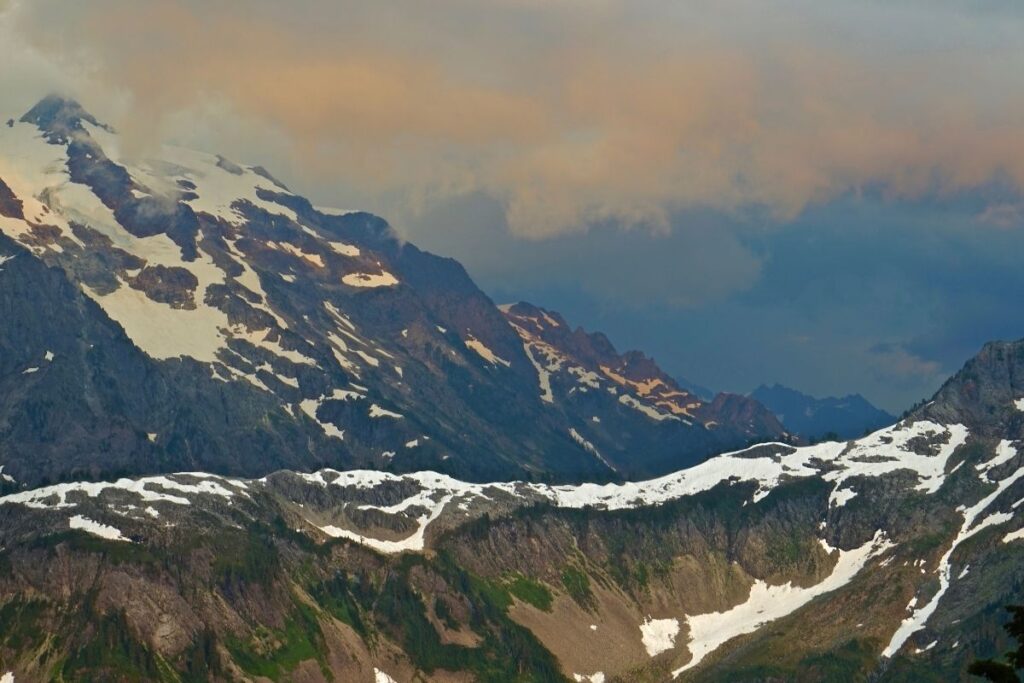
Olympic National Park
Olympic National Park is the park of beaches, mountains, and rainforests. The park has a little bit for everyone if you don’t mind a bit of hiking. There is so much to explore in this park from waterfalls to tidepools. Olympic is also the home of the Roosevelt elk and in the fall they can be heard bugling in the Hoh Rainforest area.
Here is my one day in Olympic itinerary.
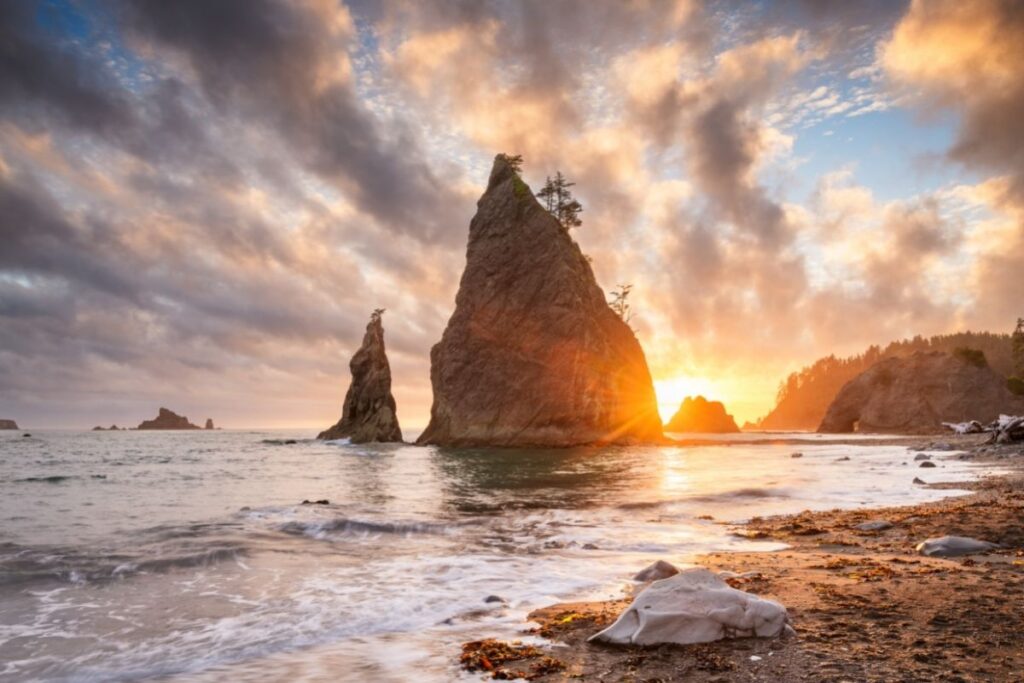
Other National Parks Units in Washington
Here are the eleven other National Park units in Washington.
- Ebey’s Landing National Historical Reserve
- Fort Vancouver National Historic Site (OR, WA)
- Klondike Gold Rush National Historical Park (AK, WA)
- Lake Chelan National Recreation Area
- Lake Roosevelt National Recreation Area
- Lewis and Clark National Historical Park (OR, WA)
- Manhattan Project National Historical Park (NM, TN, WA)
- Nez Perce National Historical Park (ID, MT, OR, WA)
- Burial Site of Chief Joseph the Younger
- Nez Perce Campsites at Nespelem
- Buffalo Eddy
- Ross Lake National Recreation Area
- San Juan Island National Historical Park
- Whitman Mission National Historic Site
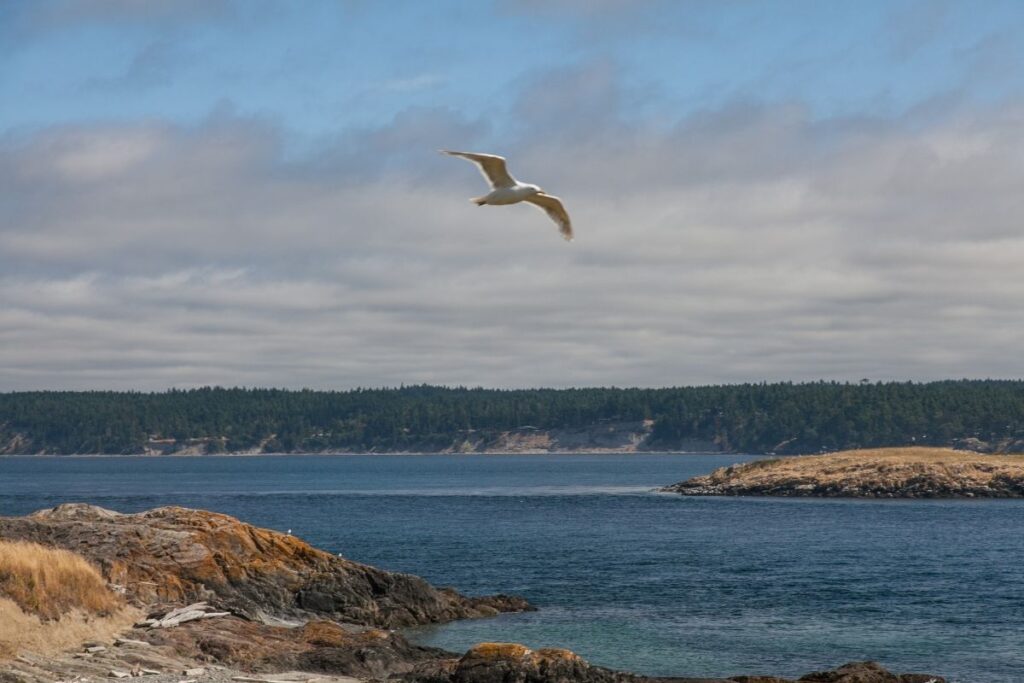
Wyoming
Grand Teton National Park
Grand Teton National Park is a popular yet underrated National Park. The park is located just south of Yellowstone and is often an afterthought addition a trip to Yellowstone.
The park is best known for the Teton Mountains and its wildlife. There are 200 miles of hiking trails in Grand Teton.
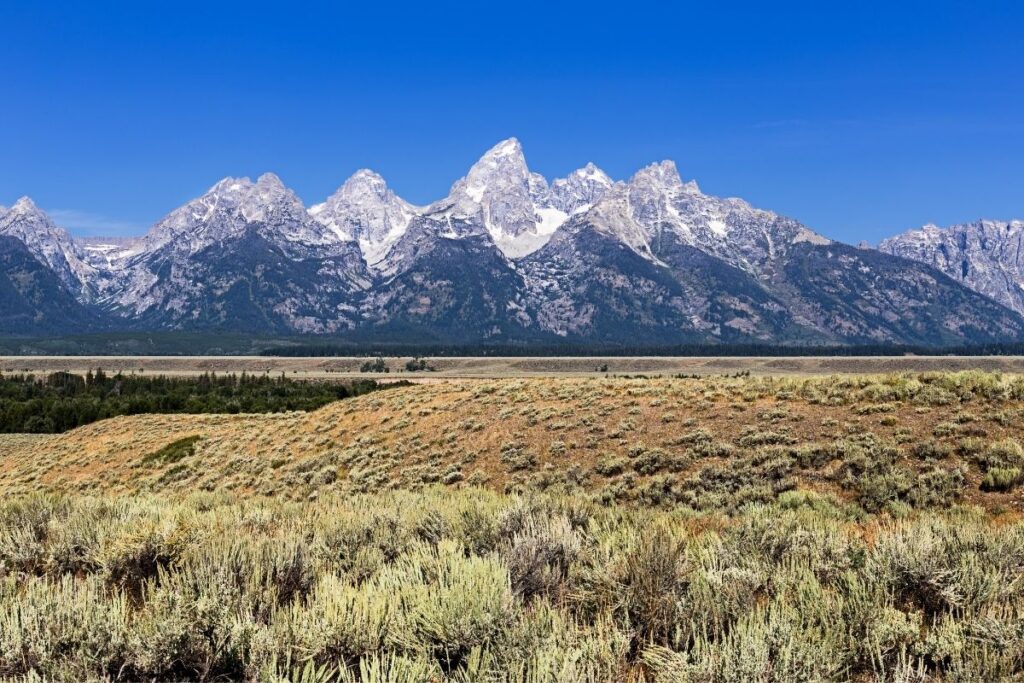
Yellowstone National Park
Yellowstone National Park is the world’s FIRST national park. Despite popular belief, it was created in 1872 by President Ulyssess S. Grant not Theodore Roosevelt.
Yellowstone is the king of parks. It has a little bit of everything from 10,000 geothermal features to Serengeti level wildlife to waterfalls to canyon to mountains. There is a lot to Yellowstone and there is a lot you need to know about visiting Yellowstone.
Here is my one day itinerary to Yellowstone.
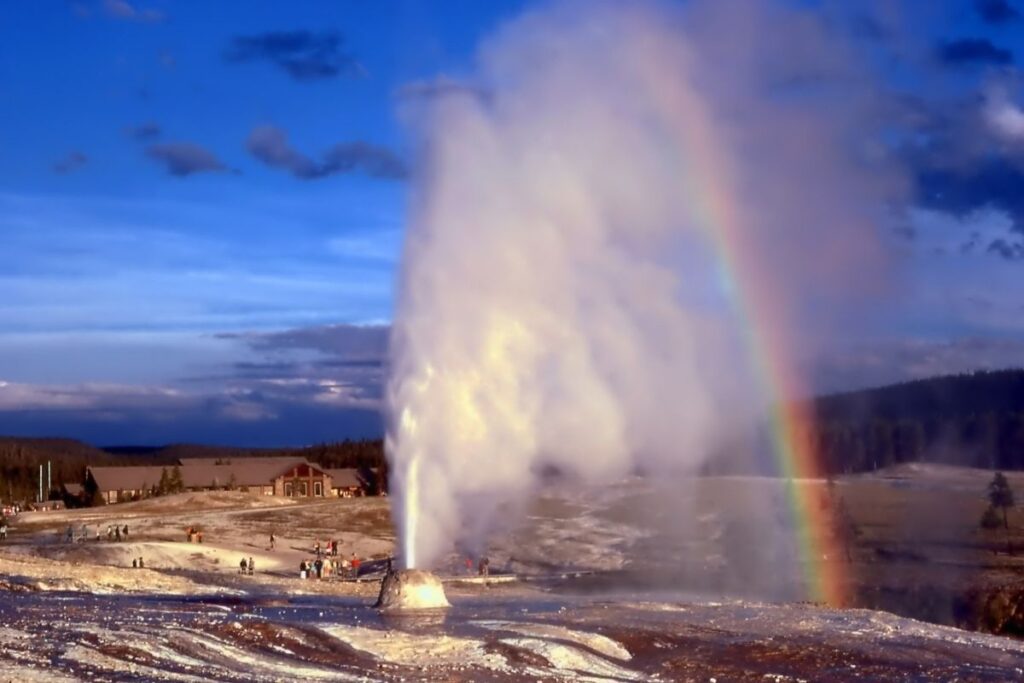
Other National Parks Units in Wyoming
Here are the five other National Park units in Wyoming.
- Bighorn Canyon National Recreation Area
- Devils Tower National Monument
- Fort Laramie National Historic Site
- Fossil Butte National Monument
- John D. Rockefeller Memorial Parkway
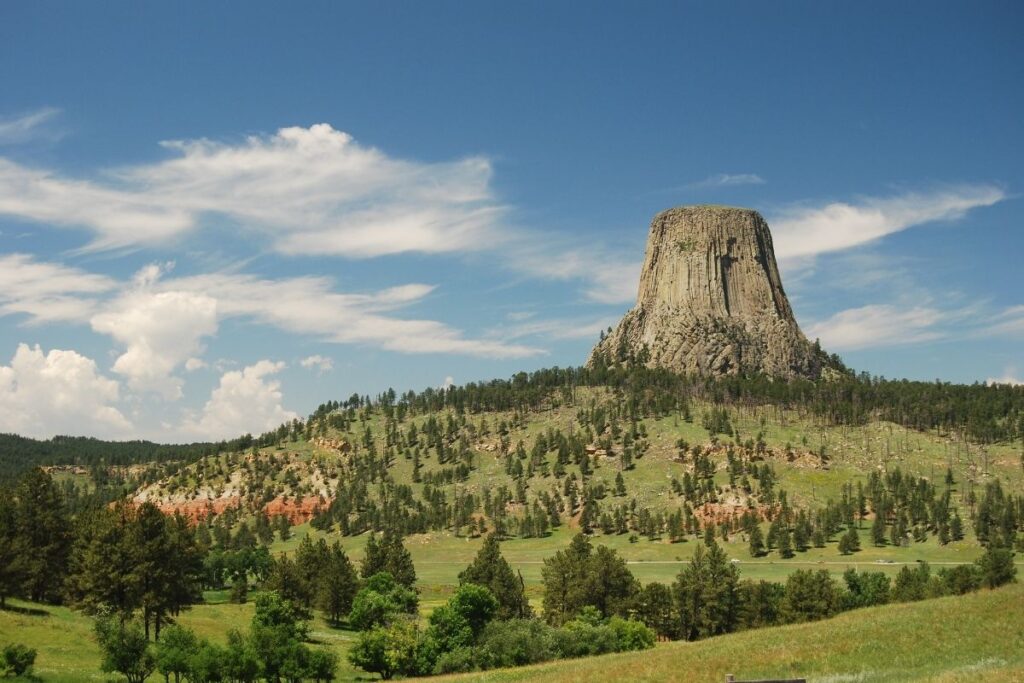
List of the National Parks in the Western United States
National Parks of the West
- Arches National Park (UT)
- Black Canyon of the Gunnison National Park (CO)
- Bryce Canyon National Park (UT)
- Canyonlands National Park (UT)
- Capitol Reef National Park (UT)
- Carlsbad Caverns National Park (NM)
- Channel Islands National Park (CA)
- Crater Lake National Park (OR)
- Death Valley National Park (CA, NV)
- Denali National Park (AK)
- Gates of the Arctic National Park (AK)
- Glacier Bay National Park (AK)
- Glacier National Park (MT)
- Grand Canyon National Park (AZ)
- Grand Teton National Park (WY)
- Great Basin National Park (NV)
- Great Sand Dunes National Park (CO)
- Haleakalā National Park (HI)
- Hawaii Volcanoes National Park (HI)
- Joshua Tree National Park (CA)
- Katmai National Park (AK)
- Kenai Fjords National Park (AK)
- Kings Canyon National Park (CA)
- Kobuk Valley National Park (AK)
- Lake Clark National Park (AK)
- Lassen Volcanic National Park (CA)
- Mesa Verde National Park (CO)
- Mount Rainier National Park (WA)
- National Park of American Samoa (AS)
- North Cascades National Park (WA)
- Olympic National Park (WA)
- Petrified Forest National Park (AZ)
- Pinnacles National Park (CA)
- Redwood National Park and State Parks (CA)
- Rocky Mountain National Park (CO)
- Saguaro National Park (AZ)
- Sequoia National Park (CA)
- White Sands National Park (NM)
- Wrangell-St. Elias National Park (AK)
- Yellowstone National Park (ID, MT, WY)
- Yosemite National Park (CA)
- Zion National Park (UT)
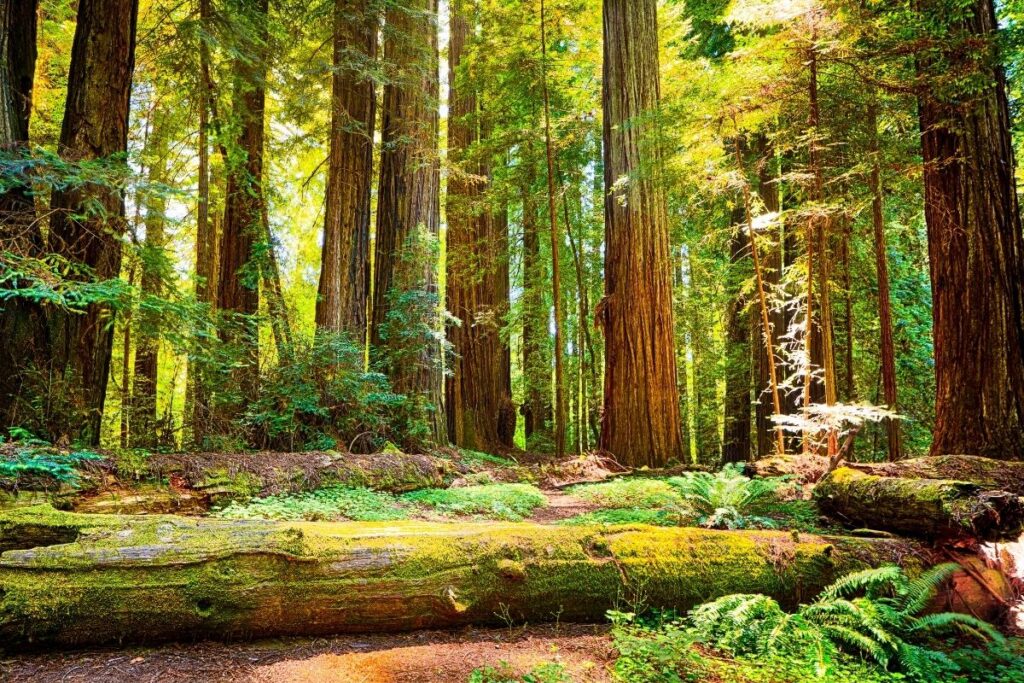
National Monuments of the West
- Aniakchak National Monument (AK)
- Aztec Ruins National Monument (NM)
- Bandelier National Monument (NM)
- Cabrillo National Monument (CA)
- Canyon De Chelly National Monument (AZ)
- Cape Krusenstern National Monument (AK)
- Capulin Volcano National Monument (NM)
- Casa Grande Ruins National Monument (AZ)
- Castle Mountains National Monument (CA)
- Cedar Breaks National Monument (UT)
- César E. Chávez National Monument (CA)
- Chiricahua National Monument (AZ)
- Colorado National Monument (CO)
- Craters of the Moon National Monument (ID)
- Devils Postpile National Monument (CA)
- Devils Tower National Monument (WY)
- Dinosaur National Monument (CO, UT)
- El Malpais National Monument (NM)
- El Morro National Monument (NM)
- Florissant Fossil Beds National Monument (CO)
- Fort Union National Monument (NM)
- Fossil Butte National Monument (WY)
- Gila Cliff Dwellings National Monument (NM)
- Hagerman Fossil Beds National Monument (ID)
- Hohokam Pima National Monument (AZ)
- Hovenweep National Monument (CO, UT)
- John Day Fossil Beds National Monument (OR)
- Lava Beds National Monument (CA)
- Little Bighorn Battlefield National Monument (MT)
- Montezuma Castle National Monument (AZ)
- Muir Woods National Monument (CA)
- Natural Bridges National Monument (UT)
- Navajo National Monument (AZ)
- Oregon Caves National Monument and Preserve (OR)
- Organ Pipe Cactus National Monument (AZ)
- Petroglyph National Monument (NM)
- Pipe Spring National Monument (AZ)
- Rainbow Bridge National Monument (UT)
- Salinas Pueblo Missions National Monument (NM)
- Sunset Crater Volcano National Monument (AZ)
- Timpanogos Cave National Monument (UT)
- Tonto National Monument (AZ)
- Tule Lake National Monument (CA)
- Tule Springs Fossil Beds National Monument (NV)
- Tuzigoot National Monument (AZ)
- Walnut Canyon National Monument (AZ)
- Wupatki National Monument (AZ)
- Yucca House National Monument (CO)
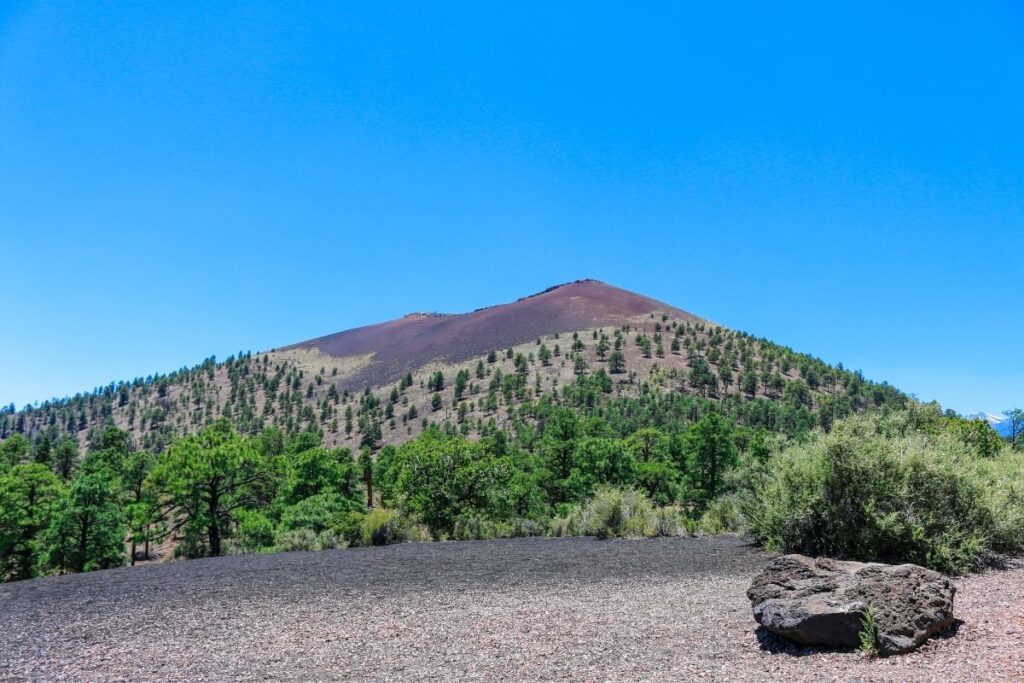
National Preserves of the West
- Aniakchak National Preserve (AK)
- Bering Land Bridge National Preserve (AK)
- Craters of the Moon National Preserve (ID)
- Denali National Preserve (AK)
- Gates of the Arctic National Preserve (AK)
- Glacier Bay National Preserve (AK)
- Great Sand Dunes National Preserve (CO)
- Katmai National Preserve (AK)
- Lake Clark National Preserve (AK)
- Mojave National Preserve (CA)
- Noatak National Preserve (AK)
- Valles Caldera National Preserve (NM)
- Wrangell-St. Elias National Preserve (AK)
- Yukon-Charley Rivers National Preserve (AK)
National Historical Parks of the West
- Chaco Culture National Historical Park (NM)
- Golden Spike National Historical Park (UT)
- Kalaupapa National Historical Park (HI)
- Kaloko-Honokohau National Historical Park (HI)
- Klondike Gold Rush National Historical Park (AK, WA)
- Lewis and Clark National Historical Park (OR, WA)
- Manhattan Project National Historical Park (NM, TN, WA)
- Nez Perce National Historical Park (ID, MT, OR, WA)
- Pecos National Historical Park (NM)
- Pu’uhonua O Honaunau National Historical Park (HI)
- Rosie the Riveter/World War II Home Front National Historical Park (CA)
- San Francisco Maritime National Historical Park (CA)
- San Juan Island National Historical Park (WA)
- Sitka National Historical Park (AK)
- Tumacacori National Historical Park (AZ)
- War in the Pacific National Historical Park (GU)
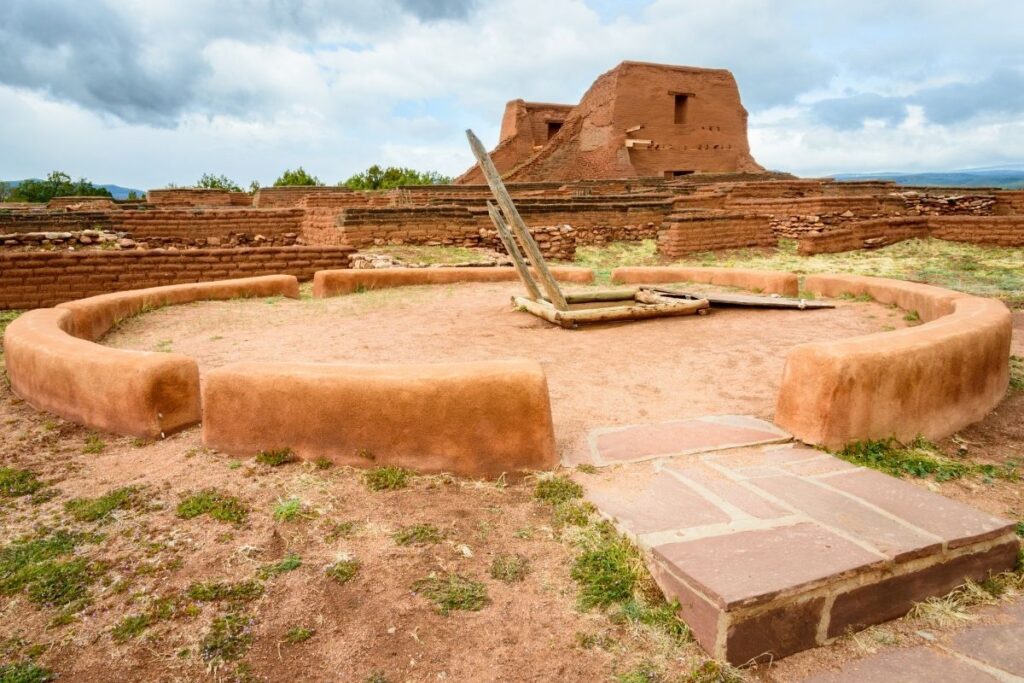
National Hisotric Sites of the West
- Bent’s Old Fort National Historic Site (CO)
- Eugene O’Neill National Historic Site (CA)
- Fort Bowie National Historic Site (AZ)
- Fort Laramie National Historic Site (WY)
- Fort Point National Historic Site (CA)
- Fort Union Trading Post National Historic Site (ND, MT)
- John Muir National Historic Site (CA)
- Fort Vancouver National Historic Site (OR, WA)
- Grant-Kohrs Ranch National Historic Site (MT)
- Honouliuli National Historic Site (HI)
- Hubbell Trading Post National Historic Site (AZ)
- Manzanar National Historic Site (CA)
- Minidoka National Historic Site (ID)
- Pu’ukohola Heiau National Historic Site (HI)
- Sand Creek Massacre National Historic Site (CO)
- Whitman Mission National Historic Site (WA)
National Battlefield of the West
- Big Hole National Battlefield
National Memorials of the West
- Coronado National Memorial (AZ)
- Pearl Harbor National Memorial (HI)
- Port Chicago Naval Magazine National Memorial (CA)

National Recreation Areas of the West
- Bighorn Canyon National Recreation Area (MT, WY)
- Curecanti National Recreation Area (CO)
- Glen Canyon National Recreation Area (AZ, UT)
- Golden Gate National Recreation Area (CA)
- Lake Chelan National Recreation Area (WA)
- Lake Mead National Recreation Area (AZ, NV)
- Lake Roosevelt National Recreation Area (WA)
- Ross Lake National Recreation Area (WA)
- Santa Monica Mountains National Recreation Area (CA)
- Whiskeytown-Shasta-Trinity National Recreation Area (CA)
National Seashores of the West
- Point Reyes National Seashore (CA)
National Rivers of the West
- Alagnak Wild River (AK)
National Parkways of the West
- John D. Rockefeller Memorial Parkway (WY)
National Reserve of the West
- City of Rocks National Reserve (ID)
- Ebey’s Landing National Historical Reserve (WA)

Associated Units of the West
Associated National Trails of the West
- Ala Kahakai National Historic Trail (HI)
- California National Historic Trail (CA, CO, ID, KS, MO, NE, NV, OR, UT, WY)
- El Camino Real de Tierra Adentro National Historic Trail (NM)
- Ice Age Floods National Geologic Trail (ID, MT, OR, WA)
- Juan Bautista de Anza National Historic Trail (AZ, CA)
- Lewis and Clark National Historic Trail (IA, ID, IL, IN, KS, KY, MO, MT, NE, ND, OH, OR, PA, SD, WA, WV)
- Mormon Pioneer National Historic Trail (IL, IA, NE, UT, WY)
- Old Spanish National Historic Trail (AZ, CA, CO, NV, NM, UT)
- Oregon National Historic Trail (ID, KS, MO, NE, OR, WA, WY)
- Pony Express National Historic Trail (CA, CO, KS, MO, NE, NV, UT, WY)
- Santa Fe National Historic Trail (CO, KS, MO, NM, OK)
Associated National Monuments of the West
- Grand Canyon – Parashant National Monument (AZ)
Associated National Historic Area of the West
- Aleutian World War II National Historic Area (AK)
Associated National Historic Site of the West
- Minidoka National Historic Site (ID, WA)
Associated Other Sites of the West
- American Memorial Park (MP)
- Inupiat Heritage Center (AK)
- Wing Luke Museum Affiliated Area (WA)
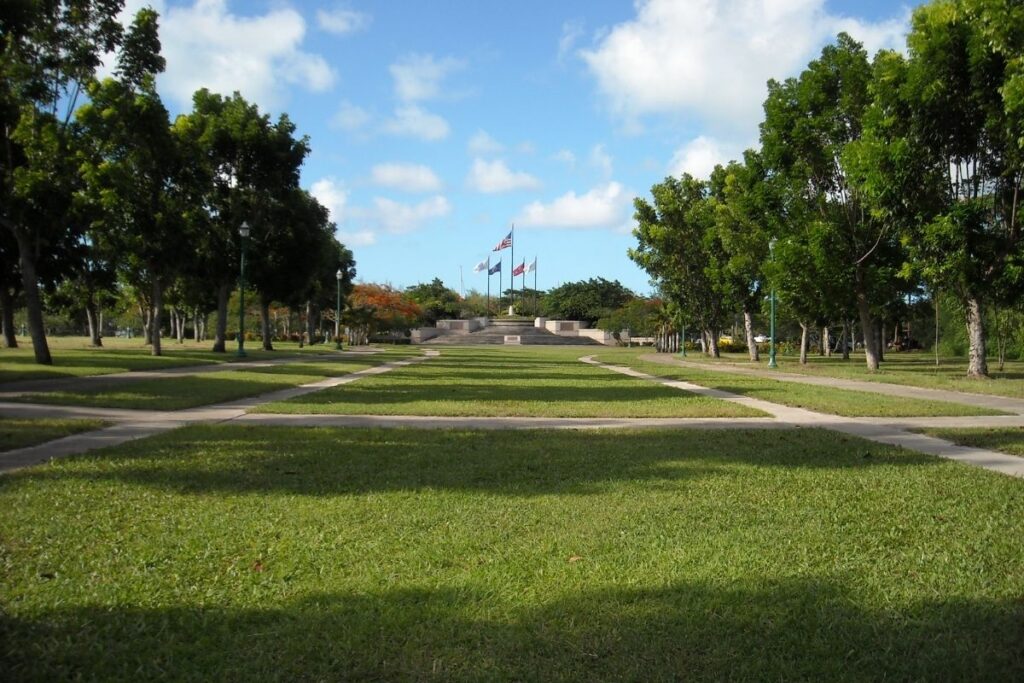
Frequently Asked Questions about the West Coast National Parks
What are the most populated national parks in the West Region?
Eight of the Ten most popular parks are located in the Western Region. These include
- Grand Canyon National Park (5.9 million visitors)
- Rocky Mountain National Park (4.6 million visitors)
- Zion National Park (4.4 million visitors)
- Yosemite National Park (4.4 million visitors)
- Yellowstone National Park (4 million visitors)
- Grand Teton National Park (3.4 million visitors)
- Olympic National Park (3.2 million visitors)
- Glacier National Park (3 million visitors)
What is considered the most beautiful national park in USA?
The most beautiful national park in the USA is a personal opinion. Personally, I think Denali during the fall is the most beautiful national park.
What is a major national park that can be found in the west region of the United States?
Popular western national parks include Grand Canyon, Rocky Mountain, Zion, Yosemite, Yellowstone, Grand Teton, Olympic, and Glacier.
Which national park is further west?
The westernmost National Park is the National Park of America Samoa. It is located in the South Pacific Ocean about halfway between Hawaii and New Zealand. The westernmost National Park Service Unit is the War in the Pacific National Historical Park in Guam.
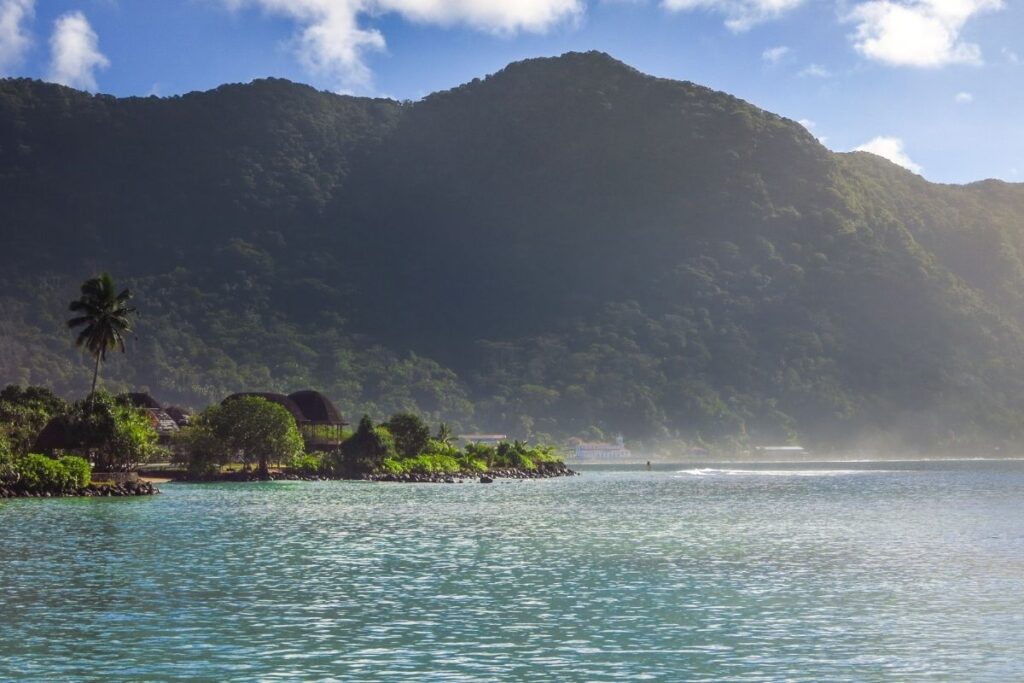
Final Thoughts on the US National Parks West
I hope you have learned a little bit about the National Parks of the West and are ready to get out and explore the West Coast National Parks. If you are interested in the National Parks of other regions click below;
- Northeast National Parks
- Southeast National Parks
- Midwest National Parks
- Intermountain National Parks
- Southwest National Parks
- Pacific-West National Parks
- Alaska National Parks
Pin for Later: West Coast National Parks: The Definitive List (2021 Update)

Jennifer Melroy
Hi, I'm Jennifer!
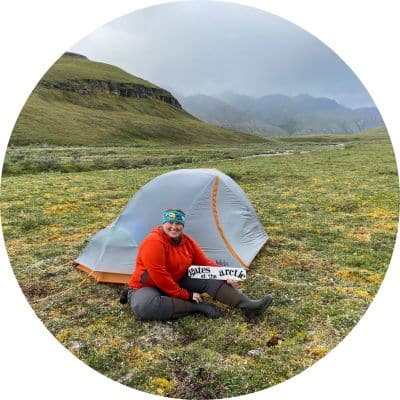
Welcome to the wonderful world of National Parks. I'm here to help you plan your NEXT amazing adventure through the United States National Parks and beyond. I want the national parks to be accessible to all.
I live in Tennessee, and when I'm home, you can find me hiking in the Smokies and the Cumberland Plateau.
58/63 National Parks
250+/423 National Park Units
Want to know more? Start Here.
ACKNOWLEDGEMENT OF LAND
On this site, we promote travel to the United States and beyond that are the traditional lands of Indigenous and First Nations peoples.
With respect, I make a formal land acknowledgment, extending my appreciation and respect to these lands’ past and present people.
To learn more about the people who call these lands home, I invite you to explore Native Land.
DISCLAIMER
National Park Obsessed assumes no responsibility or liability for any errors or omissions in the content of this site (NationalParkObsessed.com). The information contained in this site is provided with no guarantees of completeness, accuracy, usefulness or timeliness. You are encouraged to conduct your own due diligence before acting on the information provided on this site and should not rely on the opinions expressed here.
There is an inherent risk in all outdoor recreation activities, the reader assumes all responsibility for their own personal safety.
DISCLOSURE
We are a participant in the Amazon Services LLC Associates Program, an affiliate program designed to provide a means for us to earn fees by linking to Amazon.com and affiliated sites.
Privacy Policy • About Us • Contact
Select stock photography provided depositphotos
Copyright ©2023 National Park Obsessed, LLC
Privacy Overview
Last Updated on 17 Jan 2022 by Jennifer Melroy
